 |
The Parish of
Westhoughton |
 |
The Pretoria Pit Disaster
(No.3 Bank Pit, Hulton Colliery, Westhoughton)
21st of December 1910
The Pretoria Pit explosion was the 3rd worst mining disaster in British history. This project to record information about the disaster is a cooperative venture involving members of the Lancashire OnLine Parish Clerk project and the Westhoughton Local History Group. Many other people, either in a private capacity or as members of public authorities, have freely and generously given information and help. All are acknowledged below, but we wish to give special thanks to Dr. Trevor Griffiths of Edinburgh University, who opened his invaluable resource on the financial impacts of the disaster on the families involved, and provided us with data otherwise unavailable.
As befits a family history project, we have concentrated on the personal details of the 344 men and boys who were killed. We believe this is the most comprehensive, freely available record of the victims of any British mining disaster.
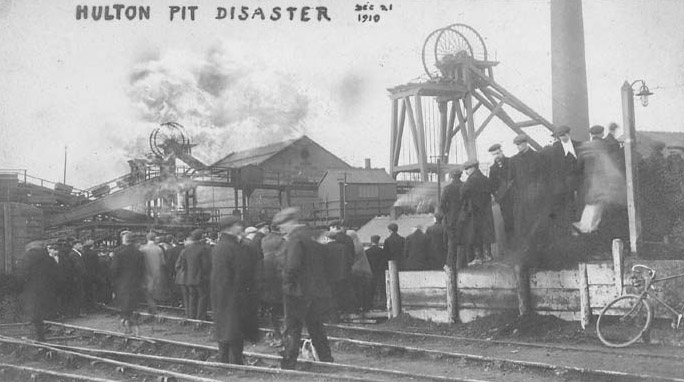 | |
The two contact people responsible for organising this project (and who take blame for any accountable errors) are Peter Wood and Pamela Clarke.
Pamela is the OnLine Parish Clerk for Westhoughton, and currently the leader of the Westhoughton Local History Group. She was born and bred in Westhoughton, and still lives there. In her own words - “In 1910 at the time of the Pretoria explosion, my grandparents lived in Brancker Street, Chequerbent. All the men in the family were colliers though none of them worked at the Pretoria Pit. My relatives were amongst the very few families in the street who did not lose a loved one. My Grandmother Alice had taken a first-aid examination and held a certificate, and quickly volunteered her services. She would have been 21 years old on the next day (22 Dec 1910). Alice helped to wash and attend the bodies of the poor souls who were killed; she wanted to show her respect for the victims. Here we are in 2006, nearly one hundred years later, and I feel the need to show my respect and to help to keep the memory of this tragedy alive for future generations to examine.”
Peter is the OnLine Parish Clerk for Atherton, and though an Athertonian, now lives in New Zealand, where he is a retired geologist. In his own words - “As a boy in the late 1940s, I remember my Grannie Charlson who lived a mile from Pretoria, telling me the explosion sounded like huge doors slamming shut. One day she pointed to a man slowly walking down the street opposite her house. “That’s Mr Davenport one of the Pretoria survivors”, she said. For most of my boyhood I lived near to the ruins of the pit, which closed in 1934. The wasteland of rucks (spoil heaps), lodges, derelict buildings and capped shafts made an exciting adventure playground. We would drop bricks through the gas vent pipe in No.4 shaft cap and listen to the long silence before the brick splashed into water hundreds of feet below. No.3 shaft was inaccessible behind iron railings and barbed wire. Someone had dropped a cigarette or firework down the vent pipe and exploding gas had blown the concrete shaft cap to bits. Years after it had been abandoned, Pretoria was still a fiery pit.”
Name: Hulton Colliery Bank Pits No.3 & 4. Also known as Pretoria Pit. Hulton Colliery Pits No.1 & 2 (Klondike Pit) were about 3/4 mile to the NW at Chequerbent, and not connected underground to Pretoria.
Proprietors: Hulton Colliery Company. The General Manager of the Hulton Collieries was Alfred Joseph Tonge.
Location: Pretoria Pit was in the centre of the South Lancashire coalfield, in the Over Hulton area of Westhoughton just north of the boundary with Atherton. The colliery was located on the south edge of Hulton Park on the lands of Sir William Hulton, as seen on the 1909 OS map. The following link takes you to a modern map of the area SD679043.
Dates: The shafts were sunk in 1900-01 and the colliery permanently closed on 14 April 1934. The explosion on 21 Dec 1910 did not stop coal extraction for long. By 11 Jan 1911, colliers were at work again in the No.4 Pit seams, a full month before the last body was recovered from the devastated districts of No.3 Pit. Production from the Three Quarters and South Plodder Districts of No.3 Pit recommenced by early March 1911.
Operation: The shafts were 75 yards apart, and both sunk to the Arley Mine at the base of the Middle Coal Measures. No.4 was the downcast shaft from where air was forced through all the workings by underground fans, returning through No.3 upcast shaft, where there was also a standby fan at the surface. The coal seams dipped to the south at about 1 in 5.5 (10o from horizontal). Five seams (known as mines) were worked, and from shallowest to deepest in the shaft, they were:-
| Coal seam | Depth from surface |
| Trencherbone Mine | 438ft (134m) |
| Plodder Mine | 822ft (250m) |
| Yard Mine | 918ft (280m) |
| Three Quarters Mine | 1083ft (330m) |
| Arley Mine | 1300ft (396m) |
The Trencherbone and Arley were worked only from No.4 Pit, the Plodder and Yard only from No.3 Pit. The Three Quarters was worked separately from both shafts. Access to all the No.3 Pit seams was from a mouthing at the level of the Yard Mine, and the term ‘Yard Mine’ has often been loosely applied to all the districts of No.3 Pit, regardless of which seam was being mined. There was also a mouthing at the Yard Mine in No.4 Pit. See the glossary for a description of the mining districts in the No.3 Pit workings.
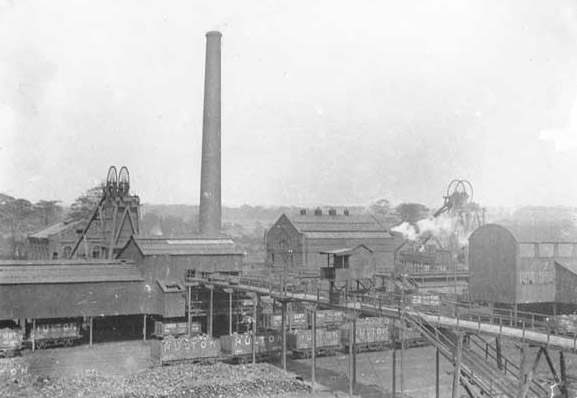 | |
Explosion: The explosion occurred at 7.50am on 21 Dec 1910, originating at the west end of North Plodder No.2 coal face, some 640 yards (580m) NNW of No.3 Pit, under the fields north of Wood End Farm on the Hulton estates (SD676049). The official report into the disaster (Redmayne 1911) concluded that a damaged safety lamp ignited gas (methane/firedamp) pouring from an extensive roof fall. The exploding gas triggered a devastating coal dust explosion that propagated through the brows, levels and jigs of No.3 Pit , reaching all the Plodder, Yard and Three Quarters coal faces. The furthest distance from the ignition point was almost a mile away, in the Yard Mine Downbrow District, some 1025 yards (940m) to the SSE of No.3 Pit, where men were driving a heading beneath the Atherton-Bolton road (Newbrook Road, SD688040).
The blast did not directly affect the Trencherbone, Three Quarters and Arley Mine coal faces of No.4 Pit, but it damaged the shaft leaving only one workable cage, and wrecked the colliery ventilation leaving only the shallowest fan at the Trencherbone Mine operational.
Death Toll: The official total of 344 deaths, comprising 328 colliery employees and 16 contractors and their staff, was set on 30 Dec 1910 (BEN 30 Dec 1910) some 6 weeks before the last body to be found was recovered. The Lancashire & Cheshire Miners Federation compiled a register of victims for relief fund use, and the BEN published this ‘complete’ list on 30 Dec 1910. Taking into account errors and duplication, this ‘complete’ list missed four names – Robert Curwen, John Prescott, Henry Price and Robert Whittaker. Despite strenuous efforts by exploration teams, only 343 bodies were recovered and 343 deaths registered. As late as 6 Mar 1911 the BEN reported that “Work is still being pushed forward for the recovery of the remaining body in the Pretoria pit, so far no trace of it has been found.” – no trace ever was found. 342 men and boys at work in the No.3 Pit districts at the time of the explosion were killed. One man (Richard Clayton) died in the Arley Mine at No.4 Pit, and one member of a rescue team (William Turton) died on the first day while attempting to put out a fire in the South Plodder District of No.3 Pit. Only one of the dead from the Yard Mine (Fountain Byers) lived long enough to reach Bolton Infirmary, where he succumbed to injuries next day (22 Dec 1910). A badly burned and shocked boy, Simeon Gibson, was found unconscious but still breathing near No.3 shaft by the first exploration team. He was sent to the surface but soon died. No one knows how long the other victims survived after the explosion. Some must have been killed outright by the blast, particularly in the shaft area. Others at the far end of the Downbrow District appear to have had time to travel 300 yards from their work places before lethal gas stopped them; perhaps half an hour?
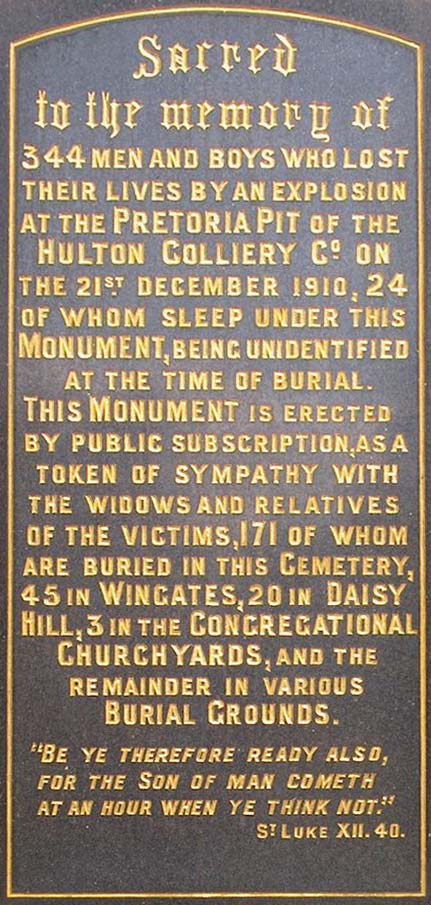 | |
Unidentified Dead: 24 unidentified bodies were buried in a vault in Westhoughton Cemetery. Eight were later identified from clothing, property and photographs, but not reinterred. The remaining 16 deaths were registered as unknown males. The 17 whose deaths were not registered by name are:-
| Thomas Aldred | 14 | James Baxter | 32 | John Bullough | 55 | ||
| William Connolly | 16 | Robert Cowburn | 16 | Leonard Emmett | 18 | ||
| Thomas Faulkner | 16 | Richard Goulding | 34 | Edward Harris | 14 | ||
| Robert Marsh | 20 | John James Oakes | 13 | James Pauldin | 21 | ||
| Joseph Tyldesley | 17 | Walter Vickers | 28 | John Waring | 14 | ||
| Fred Wolstencroft | 39 | Arthur Woods | 14 |
The body of one of those named above was not recovered.
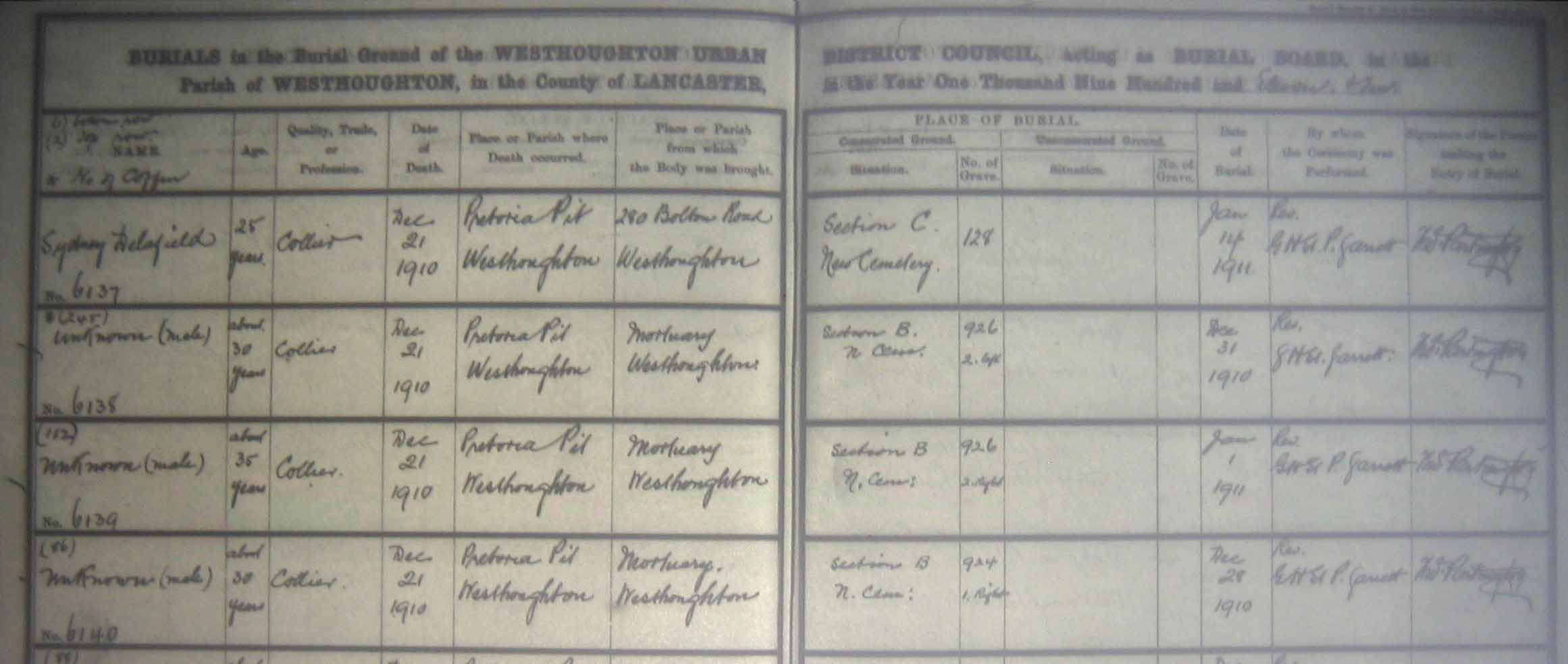 | |
“Resurrected” Dead: The curious case of William Lord indicates that even by the end of December when the official death toll had been set at 344, and the colliery company had a list of names, they were still unsure about exactly who had been killed. According to the BEN (2 Jan 1911), on Friday 30 Dec 1910, unknown body No.112 was identified as 44 years old William Lord by both Mrs Lord of Darcy Lever, and his brother Joshua. A burial certificate was authorised by the coroner, and common grave 3/N1/5&15 at Tonge Cemetery was ready to receive his coffin on 31 Dec 1910 (Tonge Cemetery Register No.80483). William Lord had left home in October and the family did not know where he was. It turned out he was alive and well, and mining coal in Barnsley, and on somehow hearing of his demise and imminent burial, telegraphed back to his wife the words “Alive Woman, Send to pit at once”. The Coroner’s response was “He evidently objects to being considered dead” (Wigan Observer). Body No.112 was buried in Westhoughton Cemetery as unknown.
The Death of a Rescue Man: The old miner William Turton died while helping to extinguish a small fire in the South Plodder District on the day of the explosion. The report of his burial service is headed “Funeral of a Hero” (BEN 24 Dec 1910), for so he was regarded. But a later report about his death, published at the time of the adjourned inquest proceedings, is headed “Death of a Rescuer. In Search of His Son” (BEN 27 Jan 1911). This account appears to have triggered unwarranted speculation that Turton died while desperately trying to find family members he believed trapped by the explosion, rather than following orders to make the pit safe. A document in Westhoughton Library, entitled ‘Pretoria Confusion’ states “..it seems he rushed down into the pit panic-stricken because he had two sons down there,” (Marsden-McGlynn, 2000). The story is propagated in a recently published DVD which states he “…died trying to rescue his two sons…” (Reel Vision Films, 2006).
The evidence given at the inquest, and consideration of the Turton family history, indicate that this was simply not true. Four men gave evidence about Turton’s demise and it is worth quoting that evidence here.
Alfred J. Tonge, General Manager of the Hulton Collieries. From Redmayne (1911): “I also instructed Turton and Stott, two reliable men, to proceed a short distance up the Plodder tunnel to see if there were any fires, and if so, to report…. As the falls were so bad further on in the downbrow I decided to return to the pit, and it was there reported to me by Messrs. Turton and Stott that they had found a fire and had not put it out. I asked them to return and do so but to be very careful of the fumes… At about this time news was brought to me that Turton, the fireman who had been sent to put out the fire, had been overcome by the fumes. We did what was possible for him and he was sent to the surface.”
Mr. Redmayne later recalled Alfred Tonge “Having been informed that men trained in the use of breathing apparatus had arrived on the scene at an early hour, I failed to see why their services had not been requisitioned for extinguishing the fire at which poor Turton lost his life. For the purpose of further probing this matter, I, towards the end of the Inquiry, recalled Mr. Tonge. His explanation was as follows : “…I remember quite distinctly now that instructions were given to Turton & Stott the second time while I was in the down-brow, they came to see me in the down-brow, and that I then told them to go back to the fire and put it out. I remember I did not see the rescue men; therefore it was impossible for me to send the rescue men to do that work before that time…”
John Williams, the Undermanager at Chequerbent No.2 Pit. Report on the enquiry in BEN (27 Jan 1911): “…about 9-30 he [John Williams] went down No.4 shaft of the Bank pit, to the Yard mouth and from there to No.3 shunt, to await orders. Whilst there he heard William Turton shout that “he wanted to find their James”. He asked Abraham Stott to go with him, and together Turton and Stott went in the direction of the South Plodder mine. As they did not return, witness went in the direction they had taken but was met by strong fumes of afterdamp and had to turn back. Along with two men named Greenhalgh and Marsh however, he returned and heard Stott shout “I’m here”…witness found Stott in a kneeling position, and semi-conscious. He was brought out and when asked where Turton was, said he was close to. Two men with apparatus went for Turton, who was unconscious when brought out.”
James Turton, a fireman at Hulton Colliery No.2 Bank Pit (and son of William Turton). Report on the enquiry in BEN (27 Jan 1911): “He went to the pit and descended in the second cage with his father. There were no rescue parties at the time. Mr Tonge gave them orders to return to him in 20 minutes as they left to go into the roads. They did so and his father was then all right. They went away again and found Davenport. Witness went to the pit head with Davenport, and when he returned to the place where he left his father he was told that he and Abraham Stott had been gassed. He went to where his father was, but deceased was unconscious if not dead”.
Abraham Stott, a dataller from the Chequerbent Pit, Yard Mine. Report on the enquiry in BEN (27 Jan 1911): “Mr. Tonge asked him and the two Turtons and another man to go and put out a fire which they had found at the entrance to the South Plodder. Witness and William Turton got to the fire first, and witness batted it out with his cap, Turton holding a lamp behind him. He dropped the lamp and it went out, and Turton said “Oh, Abraham, I have lost one of our lights”. Witness handed him his lamp but he dropped that one too. The air was getting bad and witness said they’d better be getting back, the fire being then out. They started towards the shaft but it was difficult to get along, and after a time witness fell and remembered nothing more until he was carried out.”
The only major variation in these accounts is in the evidence of John Williams, when he said he heard Turton shout “he wanted to find their James” and asked Stott to go with him. If John Williams heard correctly, this must have been after William Turton and his son James became separated as they went about their separate search and rescue activities, and William was naturally keen to know where son James was now. But was he also desperate to find two other sons believed trapped in the Yard Mine? We think not.
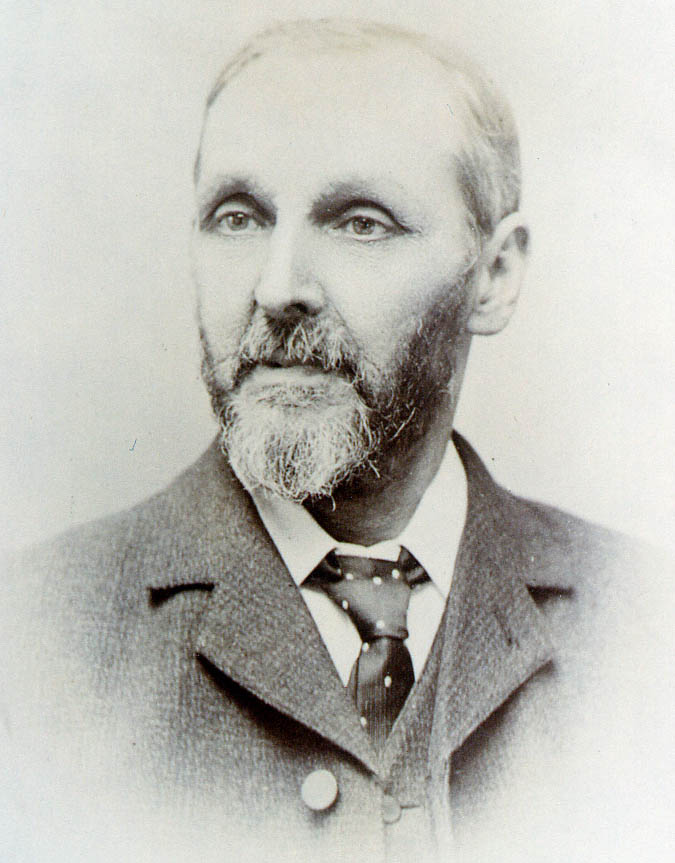 | |
William Turton had 4 sons. Family information from his great grandson Steve Wood (Feb 2008) records that the eldest son William was a school teacher aged 19 in the 1901 census, and later became headteacher at Little Lever Junior School where his wife Annie also taught; he was not living at home at the time of the disaster, and was never a coal miner. The youngest three sons were living at home on 21 Dec 1910, and they were James (23), John (18) and Walter (15). John became an electrician and worked at Bolton area collieries before moving to the ship building yards of Barrow in Furness. Walter became a colliery clerk and was living at Westhoughton when he married in 1929, but by 1934 when the Hulton Colliery pits at Westhoughton had closed, he was a wages clerk in the company's colliery at Huyton. It is quite possible that both John and Walter were employed at Pretoria at the time of the disaster, but if so, we can safely assume that both their father William, and brother James, would have certainly known that they were not employed in the Yard Mine workings.
In summary, we believe it scarcely credible that Alfred Tonge and Abraham Stott would have lied to the court of enquiry about the course of events that lead to William Turton’s death, and any concern Turton showed about finding his son, was simply to establish the whereabouts of James, an experienced collier and fireman, who was elsewhere helping with exploration of the damaged pit. Turton died, not in careless self-interest, but in trying to help a workmate put out a fire – a lethal hazard in a coal mine.
Survivors: Two of the four persons found alive in the Yard Mine on the first day survived: William Davenport and Joseph Staveley.
Athertonian haulage hand William Alfred Davenport aged 20, was found near the top of the Downbrow roadway. According to Dr Hatton (1911) “he had no recollection of anything- heard no roar, saw no flash. He was found partly in or near a manhole unconscious [this is at odds with Alfred Tonge’s evidence that Davenport was able to speak his name and take a drink], severely burnt about the head and body, arms and left leg, his appearance as regards parts burnt exactly resembling that found on those who had lost their lives. The hair was all burnt off .” He was taken to Bolton Infirmary but not expected to survive. However, by 7 Jan 1911 his brother Henry, in a letter to the press, reported he was ‘coming round very nicely’, also recording that he had worked at the pit about 5 years (BJG 13 Jan 1911). Dr Hatton suggested the manhole had provided sufficient air to keep him alive. He died 24 Sep 1951 aged 60, and was buried in Atherton Cemetery.
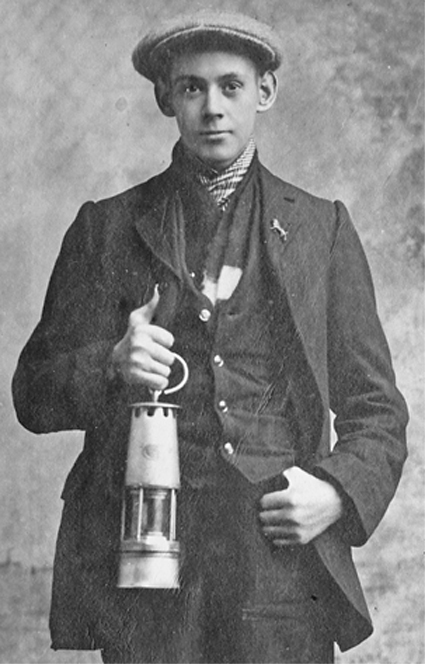 > >Photo courtesy of Alan Davies, coal mining historian |
Apprentice fitter Joseph Shearer Staveley aged 16 from Chequerbent, had gone with fitter James Berry to work in the pump house about 100 yards south of No.4 Pit. After the explosion, both attempted to get back to the shaft but were overcome by afterdamp gas. Berry died, but Staveley recovered and followed water pipes to No.4 Pit where he called for help and was found by rescuers in a downgoing cage. Staveley’s words describing his ordeal were reported in the BEN (23 Dec 1910) “There was a lot of noise…I dropped my kit...The lamps went out and I ran towards the Arley Pit [No.4 shaft]…We were half way there when he [James Berry] stumbled and fell and I fell over him. My head was swimming and I felt very tired. There was no pain. I just wanted to close my eyes and sleep. I was so tired. I went to sleep…At first I thought I was in my bed. I tried to push the clothes from me and touched the body of James Berry. I found I was dressed and it all came back to me. Something had happened. Was I locked in the mine? I called to Berry but he did not answer. I listened for breathing but I heard no sound…I put my can to my mouth and ran. The mine was pitch black. I did not know where I was going”. [he found the water pipes and followed them to the pit eye where he knocked and shouted for the cage to come] “Lower the cage to the Yard Mine…my throat was sore with shouting”.
The 545 men and boys who were rescued from No.4 Pit are not usually considered to be survivors of the Pretoria disaster. In all truth, they should be. Only one cage in the shaft was operable, the ventilation was wrecked and driven largely by natural upflow through No.3 Pit, and poisonous afterdamp was accumulating. Had another explosion occurred, as is common enough in such a situation, or had the sole cage become stuck in the damaged shaft, then more lives would have been lost. As it was, one man died in the Arley Mine, and at least two from No.4 Pit (J. Sharples and G. Partington), were badly gassed and taken to hospital where they developed pneumonia, but recovered. John Sharples appeared on a postcard of the time as one of three Pretoria survivors.
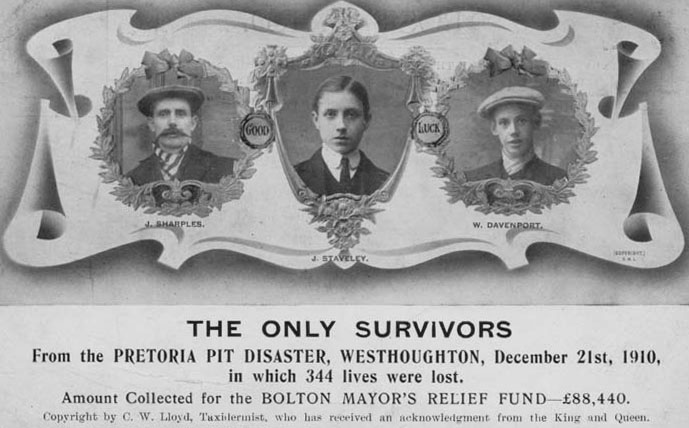 > > |
The Workforce: Coal mining was a young man’s occupation, as is clearly shown by the victims’ age distribution graph. The median age was 26, and 64% of those who died were in the 13-30 age bracket. The youngest person to die was 13 years old haulage hand Frederick Stanley Houghton from Manchester Road, Chequerbent, killed on his first day down the pit. The oldest men to die were 62 years old rescuer William Turton, and 61 years old fireman Thomas Greenhalgh from Park Road, Westhoughton. In the 1861 census Turton was a 12 years old coal miner in Durham, and Greenhalgh was an 11 years old collier’s drawer. Both men had worked in the pits for 50 years or more by the time they died down Pretoria.
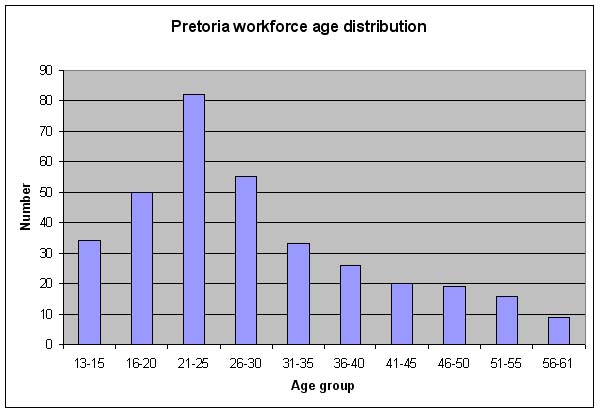 | |
Boys aged 13-15 comprised 10% of the workforce, and all were haulage hands, many of whom worked in the area near the pit shafts till they became ‘pitwise’. This was the area that took the most destructive force of the blast, which may account for the fact that boys are over-represented among the 17 victims whose bodies were never identified (40%); their mutilated remains were unrecognisable by the time they were recovered.
Pretoria was much closer to Atherton town centre than to any other town or village, but as the table shows, few of the workforce lived there. As far as coal mining went, Atherton was a Fletcher, Burrows & Co. Ltd. company town, whose Atherton Collieries provided the main employment for working men. Pretoria was very definitely a Westhoughton ‘home pit’. 239 (69%) of those who died lived in Westhoughton or one of its outlying villages of Chequerbent, Daisy Hill and Wingates. Another cluster of 65 (19%) lived in the Daubhill/Deane area of Bolton, close to the tram route along St Helens Road, that passed through Four Lane Ends and down the hill to the Atherton boundary, from where a footpath led to Pretoria.
| Location | Distance miles |
km | Workforce |
| Atherton | 0.83 | 1.33 | 24 |
| Chequerbent | 1.03 | 1.65 | 36 |
| Daisy Hill | 1.34 | 2.15 | 34 |
| Westhoughton | 1.94 | 3.10 | 137 |
| Wingates | 2.34 | 3.75 | 32 |
| Daubhill/Deane | 2.34 | 3.75 | 65 |
| Other | 16 |
304 (88%) victims were born in Lancashire, 209 (61%) in Bolton Registration District, and 158 (46%) in Westhoughton itself. Men from Staffordshire and Cheshire accounted for most of the rest.
| Birthplace | Number |
| Lancashire | 304 |
| Staffordshire | 11 |
| Cheshire | 11 |
| Wales | 8 |
| Yorkshire | 4 |
| Ireland | 3 |
| Other | 3 |
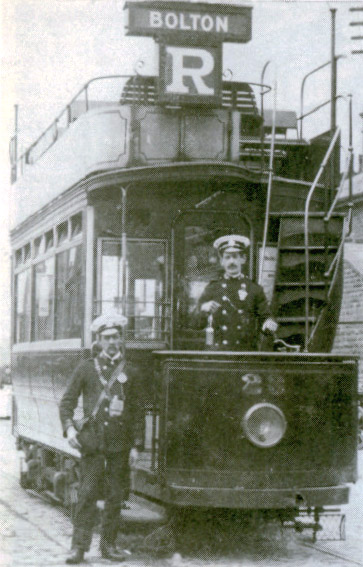 | |
The individual data records contain many mining terms, both general and specific to Pretoria, as explained in the following glossary.
OCCUPATIONS
Carpenter/Joiner: A carpenter was required for various construction jobs about the pit.
Collier: a coal face worker who hewed and got the coal.
Conveyor attendant: a man who operated the coal conveyors on the North Plodder coal faces.
Dataller: a day-wage worker employed on labouring jobs about the pit. Unlike a collier who usually had a recognised place on a coal face, a dataller could be directed to work in any part of the pit.
Drawer: a young man who serviced the colliers by taking full coal tubs from the coal face to a shunt where they were attached to a haulage rope for transport to the pit shaft. He returned with empty tubs.
Electrician: the generating station for all the Hulton Colliery pits was at Pretoria. Electricity was used in No.3 Pit for haulage on the main roadways, to work pumps in the Downbrow district, and to operate coal cutters and a conveyor on the North Plodder faces.
Engineman: the man tending the haulage motors located near No.4 Pit shaft.
Fireman: a pit official, usually a collier or dataller, appointed by management to be responsible for the safe operation of a pit district. The fireman inspected the workings for gas and other hazards and reported to the undermanager.
Fitter: needed for various mechanical assembly and repair jobs about the pit.
Haulage hand: boys and inexperienced youths started pit work as haulage hands before they become drawers and colliers. Usually they first worked on the sidings and shunts near the pit shafts to gain experience of underground operations.
Hooker-on: the man in charge at the pit bottom. He controlled access to, and loading of the cages, and was responsible for shaft signalling to the pit bank.
Jigger: a haulage hand working at a jig.
Lasher-on: a haulage hand whose job was to lash a tub chain to a haulage rope.
Pusher-on: a man in charge of a haulage hands.
Shotlighter: a fireman with authority to detonate explosive charges. At Pretoria, explosives were used for tunnelling and roof ripping, but not for coal getting.
Undermanager: the person in charge of all underground operations at the colliery. He reported directly to the General Manager.
GENERAL TERMS
Brow: Pronounced ‘brew’ in Lancashire, a brow was an inclined roadway or tunnel. Two important brows in No.3 Pit were the Main Brow and Downbrow. The Main Brow ran from south of the shafts to the W for 790 yards (725m), rising at about 1 in14 to the Top Yard coalface. The Downbrow dipped at 1 in 12 in the opposite direction for about 950 yards (870m) to the far SE end of the Bottom Yard coalface.
Fault: a fracture plane in the Earth’s crust formed by movements in the geological past. In the Lancashire coalfield the fault planes dip at about 60 degrees from horizontal. On the downthrow side of a fault, the strata are displaced so that a particular coal seam is at greater depth than on the upthrow side. A significant fault crossed the No.3 Pit workings in an E-W direction to the north of the shafts.
In bye and out bye: towards the coal face, and away from the coal face. For instance the body of Arthur Chetwynd was found on the Downbrow “35 yards out bye No.3 jig”, meaning he was lying 35 yards from the junction of the Downbrow and No.3 Jig roadways in the direction back towards the pit bottom.
Jig: an endless-rope haulage system in which a self acting wheel with a brake allowed full tubs to go down an incline under gravity from the coal face to a haulage road; empty tubs were hauled up the incline by the weight of the full ones going down.
Jig brow: the inclined roadway in which a jig operated. At Pretoria, jig brows were referred to simply as jigs. Two important ones were the North Jig and No.1 East Jig. The North Jig ran from near No.3 shaft to the NW for 750 yards (690m) rising at 1 in 6 to the west end of the North Plodder No.1 coalface. No.1 East Jig ran from the same place, rising to the NE for 990 yards (905m) to the isolated East Jig District of the Yard Mine.
Level: a roadway with little rise or fall, more or less following the strike of a coal seam at right angles to the dip direction. The East Level was the main access road from the shafts to the north end of the Bottom Yard coalface.
Mine: in Lancashire the word ‘mine’ meant coal seam, not a place where coal was mined, which was a colliery or more colloquially, a pit. Shafts were often named for the main coal seam they exploited, resulting in confusing terminology such as “Atherton Collieries Gibfield Arley Mine Pit”, which was a single pit shaft sunk to the Arley Mine coal seam at Gibfield colliery in Atherton.
Mouthing: the opening in the wall of a pit shaft that gave access to the workings at a particular level.
Pit: either a colliery (as in Pretoria Pit), or a single shaft (as in No.3 Pit).
Place: where a collier worked at the coal face.
Shunt: where tubs from a gravity jig haulage were switched to engine haulage along a main roadway. Tub sidings near the shafts. A passing place for tubs on a jig haulage.
PIT DISTRICTS
There were six districts of No.3 Pit, three working the Yard Mine, two the Plodder Mine, and one the Three Quarters Mine. One fireman was in charge of each district. The districts are shown on Plan No.1 from the Redmayne report, and marked on the 1909 OS map above. The Landranger Grid Reference will take you to a modern topographic map with an arrow to show where the coal faces were in 1910.
Downbrow District: This was the largest district where most men worked. The Yard Mine coal face (known as the Bottom Yard) ran for some 635 yards (580m) down dip. At the north end under the ‘Big Lake’ in Mill Dam Woods [SD684045] it was about the same depth as the mouthing in No.3 shaft, and access was via the East Level. At the south end [SD688040] under Newbrook Road the Yard Mine was some 90 yards (82m) deeper, and reached via the Downbrow. Three jigs connected the coal face to the Downbrow. 140 died in the Downbrow District, including 48 who were struggling back to the shafts along the East Level. Only 6 of the Downbrow victims were killed by explosive effects alone, whereas 105 died solely from CO gas poisoning with no physical injuries. A further 20 killed by gas were also burnt.
East Jig District: A small district working the Yard Mine in faulted ground under Hulton Park, some 700 yards (640m) NE of No.3 shaft [SD684049]. 23 died in the East Jig District. 15 were killed just by CO gas, the rest by some combination of gas and explosion. Only 2 were burnt.
Top Yard District: A coal face in the Yard Mine under the fields just north of the Atherton-Westhoughton boundary, some 700 yards (640m) WNW of No.3 shaft [SD673046]. The elevation of the coal face was 40-130 yards (35-120m) higher than the same seam in the Downbrow District, hence the Top Yard/Bottom Yard distinction. 42 died in the Top Yard District. Over half were killed by combined explosion and CO gassing, the rest from CO alone. 26% suffered burns, a similar proportion to the Three Quarters District, but much lower than in the Plodder Districts.
North Plodder District: The 2nd largest district of No.3 Pit working the Plodder Mine on two faces under the area north of Wood End Farm some 640 yards (580m) NNW of No.3 shaft [SD676049]. The coal faces were on the downthrown northern side of a fault, which had displaced the coal seam 32 yards down with respect to its position on the upthrown out-bye side. These were the only faces in No.3 pit to use an electrically driven conveyor and coal cutters. The explosion originated in the North Plodder District, and 61 died there. At the site of the explosion on North Plodder No.2 face, 17 of the 18 bodies showed explosion damage, and half were burnt. Only one man died solely from CO gassing. By contrast, 15 of the 16 at No.1 face were burnt and gassed, but none were killed by explosion. Away from the faces, CO was the direct or contributory cause of death of 88%, while 50% of the bodies showed explosion damage, and 58% were burnt.
South Plodder District: Two coal faces working the Plodder Mine some 500 yards (455m) ESE of No.3 shaft more or less under the area where Chanters Brook crosses the Over Hulton-Atherton boundary [SD683042]. The workings were directly above the Downbrow roadway. There were a number of exploratory cul-de-sac headings distant from the main faces. 34 died in the South Plodder District. 24 were killed by explosion, 13 directly while 11 survived long enough for CO gassing to contribute.
Three Quarters Mine District: Working the deepest coal seam accessed by No.3 Pit, this was the closest district to the shaft, some 220 yards (200m) WNW under New Park Wood [SD677044]. 21 died in the Three Quarters Mine District, mostly from CO gas though a third were also burnt.
Pit Shaft Area: The area close to the shafts was a busy place with the pit bottom shunts, undermanager’s office, workshops and motor houses. The blast hit the shafts area with great force, hurling 7 bodies into No.3 shaft and one into No.4 shaft. 22 in total died in this area, all but 2 being killed by explosive violence (one was the undermanager, protected in his office from the blast, but not from gas).
INDIVIDUAL DATA FILE INFORMATION
The following notes relate to the information about the victims in the searchable database.
Name: Age: Address: Occupation:
In the information sources listed, over 60 of the victims’ names have spelling variations. If census and civil registration records are included, the total is much higher. Many are obvious switches in one or two letters, such as Molloy (Malloy, Mulloy), or Dorcey (Dorsey, Dorsay). Others change the sense of the name entirely, such as Feeley (Lilly), Hodson (Hodorn) and While (White). We have chosen what we believe to be the most accepted version of the name, and noted the variants.
Age variations are noted in some 90 cases, though mostly of just one or two years. We state what we believe to be the true age at the last birthday before the disaster, but have made a note of recorded variations.
Victim’s addresses at the time of the disaster are given in Sgt. Brown’s list, and in compensation fund documents; mostly these coincide, but variants have been noted. The home address of men who were in lodgings is also recorded.
Occupations are as given in Mines Inspector John Gerrard’s report. Variations in Sgt. Brown’s list are noted. Brief descriptions of occupations are given in the Glossary.
When and where born
We have used census, civil registration and baptism registers to determine where the victims were born. Most victims were Lancastrians, so the county or country of birth is given only for those who were born outside Lancashire (pre-1974 boundaries).
Dates of birth are known for 132 victims, and baptism but not birth dates for a further 72. The quarter of the year in which the birth was registered is known for 324 victims. It should be noted that a birth may have occurred in the quarter preceding the one in which it was registered, most importantly for those born in mid-late December, whose birth registration may well be in the following year. In only 1 case, the Irish immigrant James Price, are we uncertain to within 12 months when someone was born.
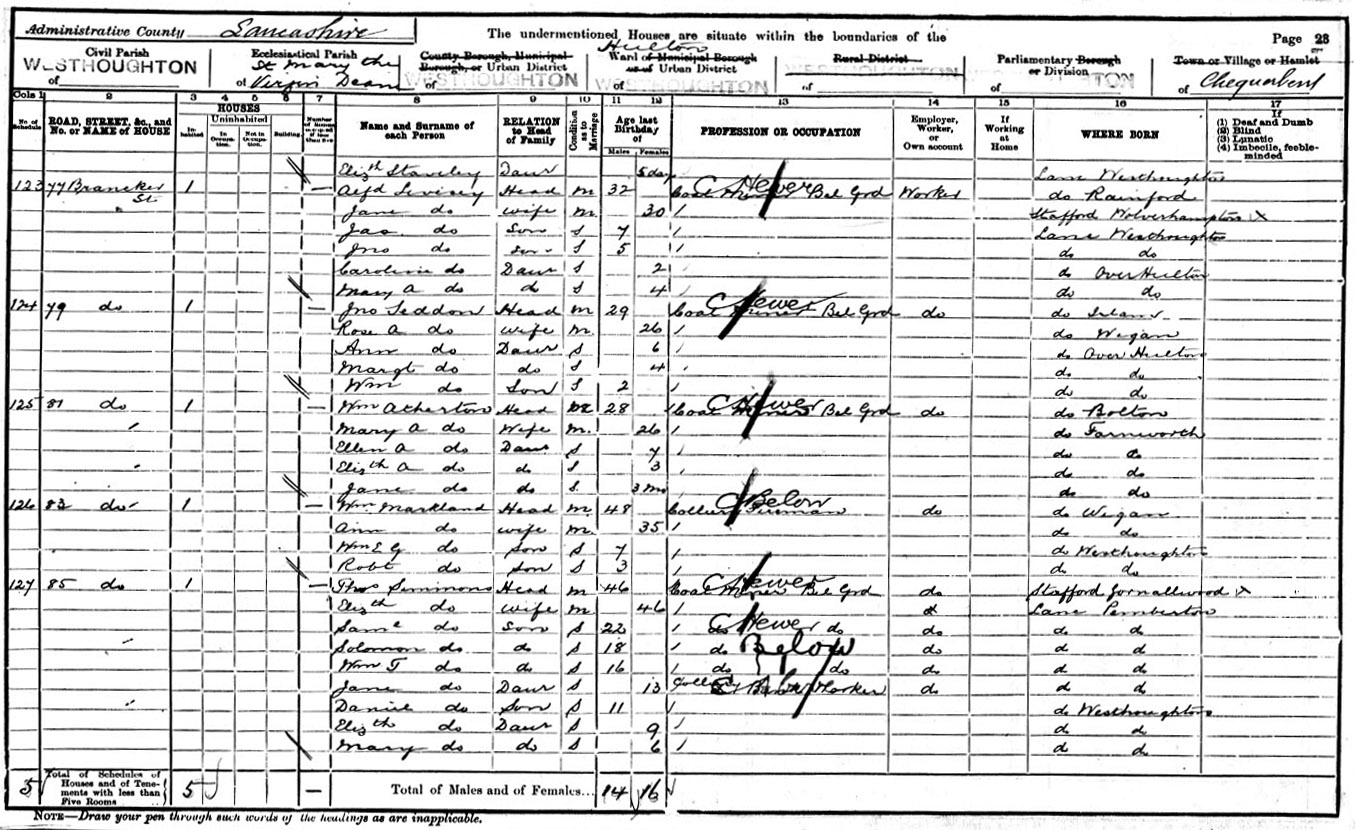 | |
Victim numbers
In Appendix D of the Redmayne Report, three numbers are ascribed to each victim; a Recovery Number, a Consecutive Plan No., and a Tally No. Sgt. Brown’s list records only the Recovery No. and Tally No. (also called Pit No.).
Recovery No. As each body was brought to the surface it was given a recovery number in chronological sequence from No.1 on 21 Dec 1910 (Richard Clayton) to No.342 on 14 Feb 1911 (Thomas Farrimond). Both the Redmayne and Sgt. Brown lists conclude at No.344 (the official death toll), but the last two numbers are fictitious and appear to have been added as blank numbers to make the recovery lists look complete. Fountain Byers was the only man to have survived long enough to die in hospital (on 22 Dec 1910). In the Redmayne list he is inserted, apparently at random and with no recovery number, between Nos. 336 and 337 in January 1911. Byers is missing entirely from Sgt. Brown’s list. Removing the blank numbers 343 and 344, and adding Byers to the list, gives the correct total of 343 victims recovered (see Death registration).
Body position number. The Consecutive Plan No. in the Redmayne Report is the position where each body was found, as marked on Plan 2 of the report, which also shows where the face workers were expected to have been prior to the explosion. The body position numbers and recovery numbers are unrelated. Sgt. Brown’s list gives details of where the bodies were found, but noted against the Recovery No., not the Consecutive Plan No. The body position numbers run from No.1 (Fountain Byers) through No.336 (William Dyke). The positions of the last 7 bodies recovered from the North Plodder and Top Yard Districts, were not recorded.
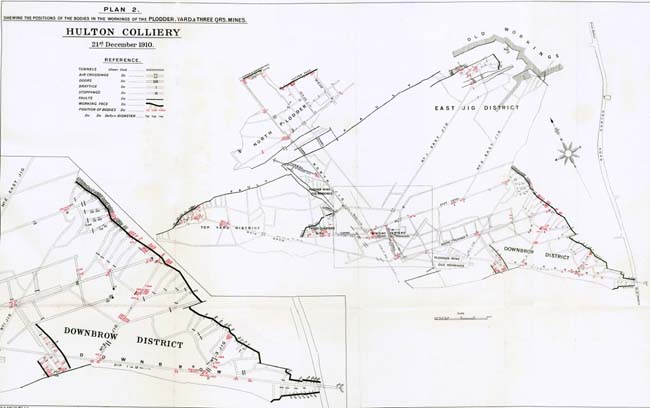 | |
Tally. A tally (also known as pit token or check) was a numbered metal tag used to record the number of men working underground at any one time. Many different tally systems were in use in British collieries, involving one or more tags and/or numbered pit lamps. For example, in some pits a tally was exchanged for a numbered lamp before descending, in others a dual system operated whereby one tally was surrendered to the bankman and a duplicate kept by the miner. We do not know what system was in use at Pretoria, but the Redmayne Report makes it clear that numbered lamps were not involved.
“Since the introduction of the Wolf lamp no daily record of any kind had been kept as to the number of the lamp issued, to whom it was given, time of delivery, or time of return. Neither had a proper record of damaged lamps been kept. Six months before, when the Protector lamp was in use, a proper system had been in vogue, and at the time of the explosion the management were on the point of introducing a complete system of tallying lamps. New checks had been obtained and an admirable system, based on the principle of one man the same lamp daily, would have been operative in a very short time had the explosion not intervened.” (Redmayne, 1911. p10)
The tally numbers run from 851 (Fountain Byers, the first live casualty taken to the surface) through 1203 (Thomas Farrimond, the last body found) – a total of 353 that includes 10 unused numbers at 1032-1040 and 1077. A detailed analysis of tally numbers against recovery date and body location suggests that blocks of tallies were allocated to each district according to how many men were expected to have been working there. Tallies appear to have been used as body tags allocated during recovery, and were not used for identification. A report in the BEN (24 Dec 1910) hints at this process “One of our representatives was this morning informed that yesterday no fewer than 141 bodies were tallied ready for removal from the mine”.
On the first day 7 victims were raised with recovery numbers 0-6 (0 being the unnumbered Fountain Byers) matched by tallies 851-857. Of these, 1/852 was Richard Clayton who was the only man to die in the Arley Mine workings from No.4 Pit, and 3/854 was William Turton, a fireman from Chequerbent Pit who was the only member of the exploration and rescue teams to die. The others victims were all found close to the shafts, as were William Davenport and Joseph Staveley, the only two men from the Yard Mine to survive the explosion. If each man had a tally with him prior to the disaster, they could not possibly have fallen into such a coherent numerical sequence.
A graphic demonstration of how tallies were allocated is shown by the following sequence of bodies recovered on 27 Dec 1910 from a brow leading to the conveyor on North Plodder No.1 Face:-
Recovery No.267. Body position 80. Tally 1161. in brow 22 yards from face.
Recovery No.268. Body position 81. Tally 1162. in brow 17 yards from face.
Recovery No.269. Body position 82. Tally 1163. in brow 13 yards from face.
Recovery No.271. Body position 83. Tally 1164. in brow 11 yards from face.
Recovery No.270. Body position 84. Tally 1165. in brow 8 yards from face.
Recovery No.272. Body position 85. Tally 1166. in brow 6 yards from face.
As the rescue team worked their way up the brow towards the face, they logged and tallied the bodies in an orderly, consecutive manner.
Recovery and Identification
Dates of recovery are from the Redmayne Report and Sgt. Brown’s lists. There are some differences that are noted under variants. Location of bodies, who identified them, and what property was found with the body (if any) all come from Sgt. Brown’s lists. We have made note of those cases where the locations do not match the body positions on Plan 2 in the Redmayne Report, and used Plan 2 to add detail where the reported locations are ambiguous.
Cause of death
Cause of death is taken from Appendix D in the Redmayne Report, which is said to be an exact copy of the medical report on the victims. The information is brief to the point of being perfunctory, and in all but three cases is ascribed to carbon monoxide (CO, afterdamp) poisoning, explosive violence, or a combination of the two. Note is also made of whether a body was physically damaged, showed signs of scorching and charring, and in a few cases whether decomposition was a factor or not.
In his paper to the British Medical Journal, Dr Hatton gave more detail about four of the victims recovered on the first day (Fountain Byers, Richard Clayton, Simeon Gibson and William Turton), and presented a statistical summary of the causes of death and the extent of flame burning and physical trauma.
The causes of death and nature of damage to the 343 recovered victims were stated to be:-
| Carbon monoxide | 224 | (65%) |
| Explosion | 53 | (15%) |
| Explosion and CO | 63 | (18%) |
| Charred and scorched by flame | 92 | (27%) |
| Injured by violence | 31 | (9%) |
| Not injured by violence | 312 | (91%) |
Charring and scorching was obviously not counted as a violent injury. Some of the medical remarks raise questions about the accuracy of the data in Appendix D, if not about Dr Hatton’s diagnoses. On 4 Jan 1911 a number of badly mutilated bodies were retrieved from the bottom of the shaft, into which they had been thrown by the full force of the blast that hit the area around the Yard Mine mouthing. One had his head blown off, and another his skull and brains blown out, yet both were reported to have been killed by violence and CO. It is doubtful they would have had time to breath in lethal quantities of gas.
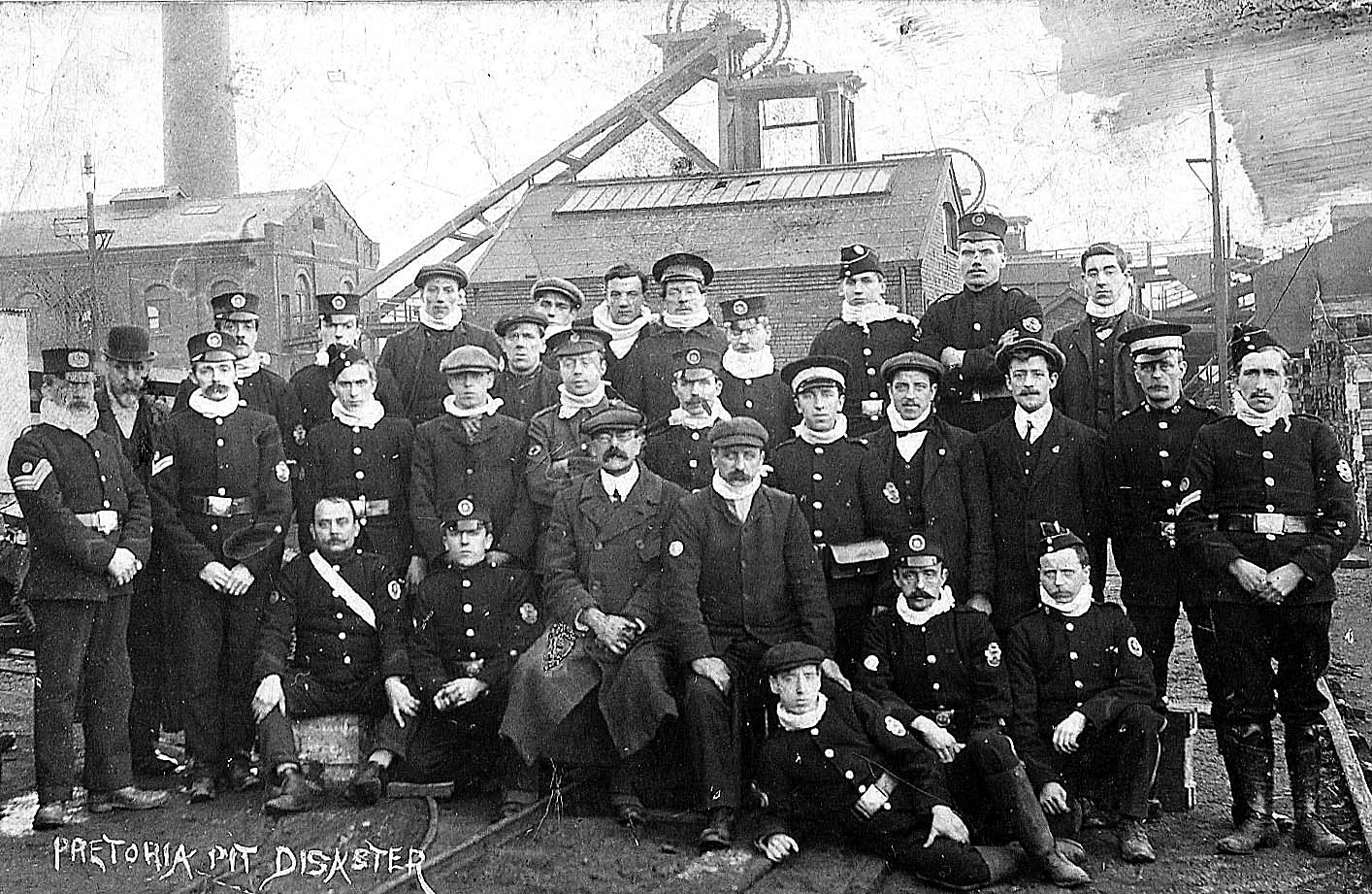 | |
Coroner’s Inquest
The inquest into the death of Fountain Byers was held at Bolton Infirmary, where he died, by the Borough Coroner Mr. J. Fearnley. All other inquests were held by the County Coroner Mr. Samuel F. Butcher. The coroner, jury, witnesses and press assembled in the No.3 Pit (Yard Mine) engine house, which served as the court room for the first phase of the inquiry, primarily for the formal identification of bodies. In addition the coroner asked each witness whether the deceased had ever complained of his conditions at work, particularly if gas had been a problem. From reports in various newspapers, we have gleaned 82 comments about work conditions directly attributed to a victim. Apparently many witnesses reported no complaints, and their names were not mentioned in the press.
The inquest was convened 21 times from 23 Dec 1910 through 16 Jan 1911, dealing with the bodies of 336 victims, from Richard Clayton No.1 to Richard Wild No.336. The members of the jury were:-
John Yearnshaw of Atherton. Foreman.
Richard Harrison of Atherton.
John Norbury of Atherton.
John Lowe of Atherton.
Samuel Mather of Atherton.
James Guy Turner of Atherton.
William Orrell of Atherton.
James Speakman of Atherton.
John Edward Barlow of Atherton.
John Bullough of Atherton.
Thomas Rigby of Westhoughton.
William Harrison of Westhoughton.
Thomas William Gorringe of Westhoughton.
Philip Westhead of Westhoughton.
Edward Lyon of Westhoughton.
William Moss of Westhoughton.
Thomas Brown of Westhoughton.
John Henry Taylor of Chequerbent.
The inquest was adjourned for a week and reconvened on 24 Jan 1911 at the Carnegie Hall, Westhoughton, sitting on 13 days through to 13 Feb 1911. During this phase of the inquiry the jury dealt with such issues as the origin and cause of the explosion, the management of the colliery, whether anyone was to blame, and recommendations about coal mine safety in general. Samuel Pope, a Barrister-at-Law, reported to the Home Secretary on this adjourned inquest (Pope, 1911). He recorded the verdict of the jury as follows:
“That on the 21st day of December 1910, at the No.3 Bank Pit, commonly known as No.3 Pretoria Pit, Westhoughton, in the County of Lancaster, an accidental ignition of gas and coal dust occurred on the conveyor face in the North Plodder Mine in some manner to the jury unknown, but probably from a defective or over-heated safety-lamp, and produced an explosion. That upon such ignition and explosion followed a large ignition and explosion of coal dust affecting the whole of the coal mines working in the said pit. That the said [here followed a list of names of the men killed by the explosion] were with others at the time of the said explosions employed in the Yard Mine of the said pit, and in consequence of such explosions and resulting after-damp died there the same day, so that they came by their deaths by accident and not otherwise. That, Mr. Coroner, is the verdict of the jury.”
Burial
We have located the burial places of 340 victims (including those in the vault for unidentified victims at Westhoughton Cemetery), and visited most of the 26 cemeteries and churchyards where they lie. We have photographs of 194 grave memorials recording 258 names; copies of photos can be obtained from Pam Clarke. The memorial inscriptions are recorded on this site, and can be accessed via the active MI link at the end of the ‘Buried’ line, or by the general index. Grave locations in Atherton, Heaton, Hindley, Leigh, Tonge, Tyldesley and Westhoughton cemeteries, and in Daisy Hill St George churchyard, were extracted from microfilm of the burial registers. Locations in Deane St Mary, and Halliwell St Peter churchyards were taken from the burial registers. The burials we have not yet located (August 2013) are of Edward Houseman, Albert Smith and Herbert Vickers.
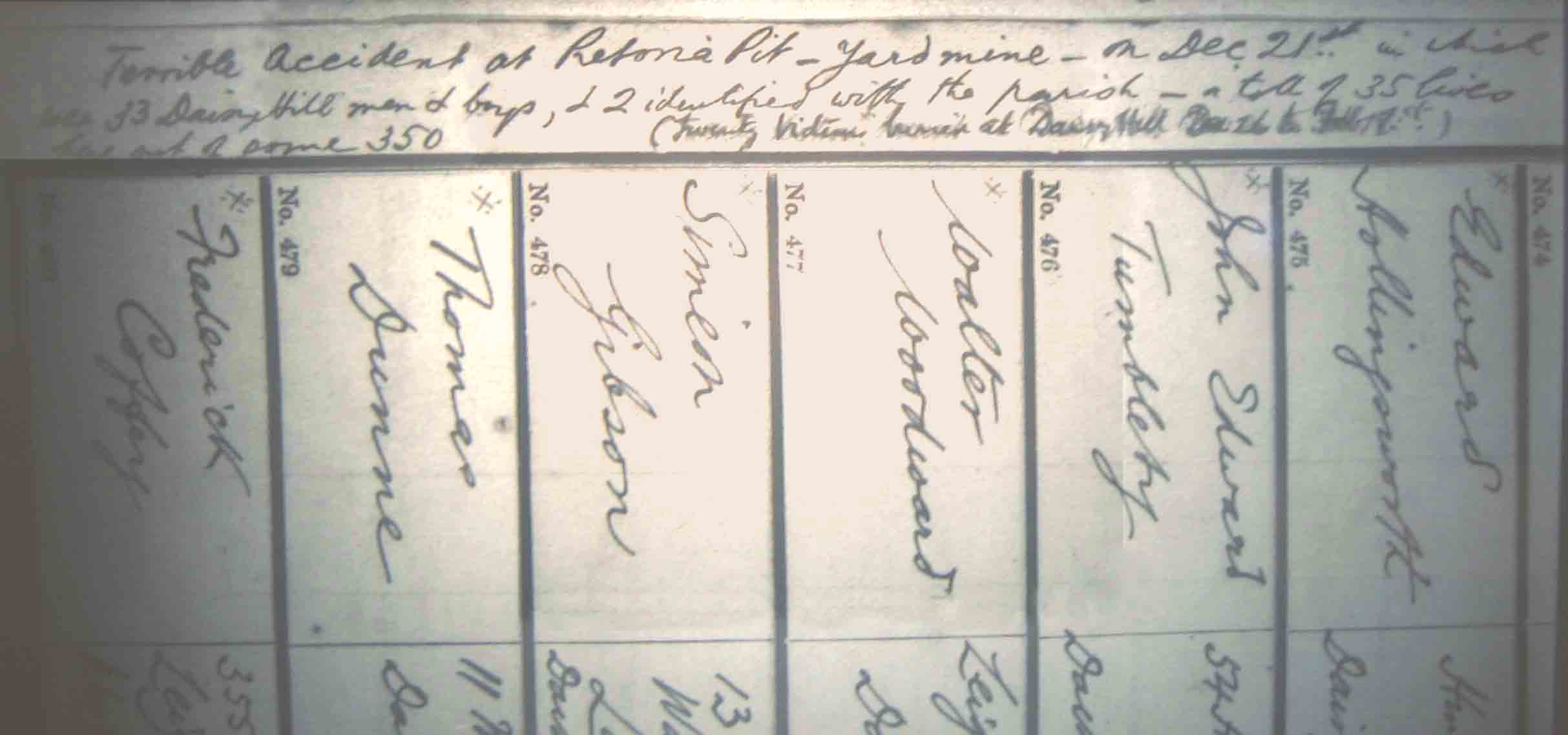 | |
Some victim’s graves have no memorial stones. Others vary from the most simple to the grandiose. Four examples are shown here.
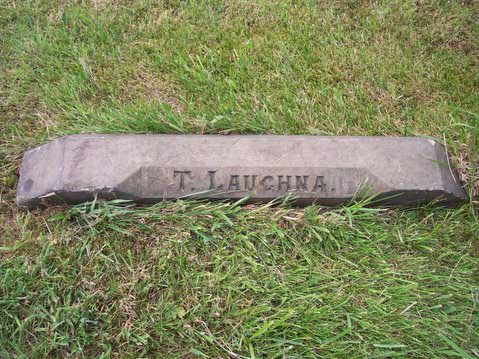 | |
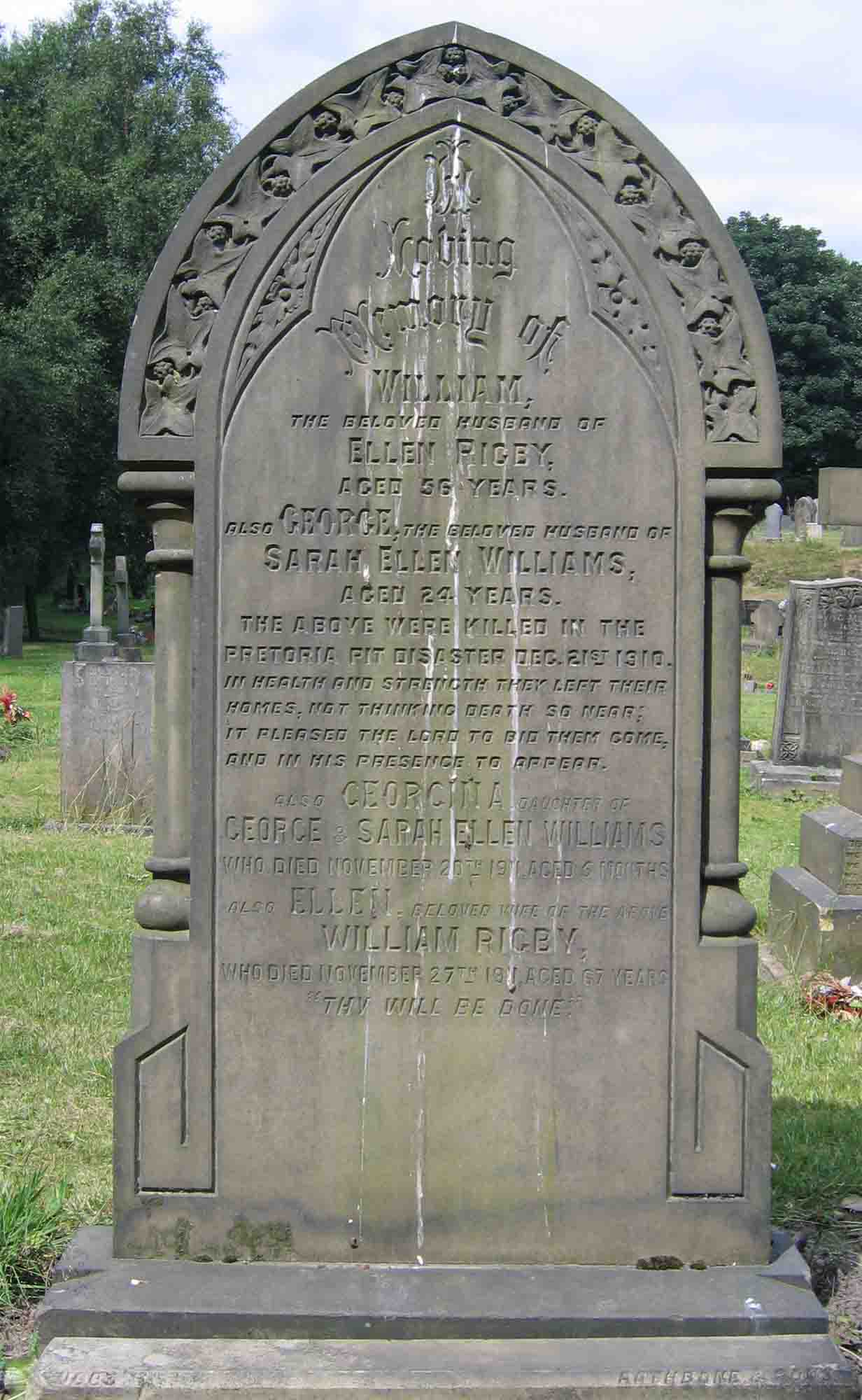 | |
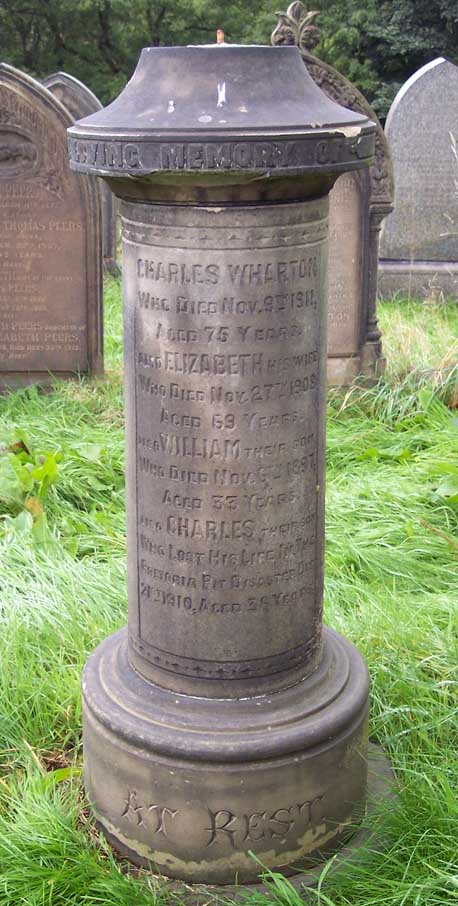 | |
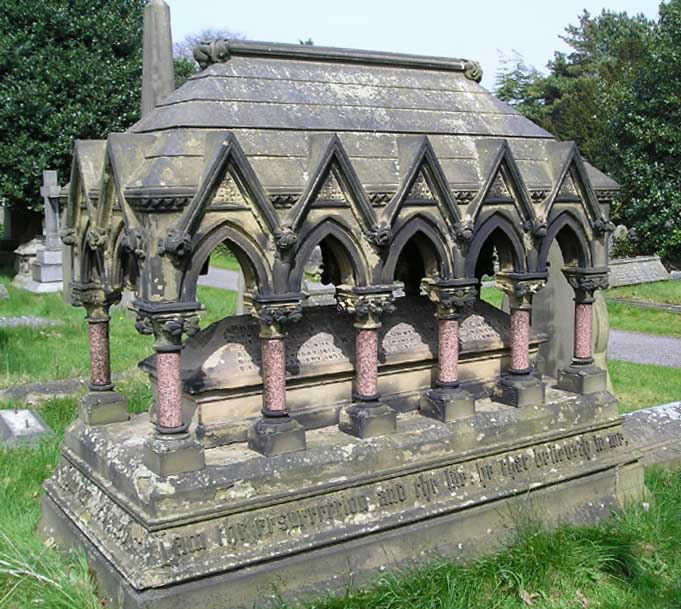 | |
Death registration
Pretoria Pit was in the Bolton Registration District, so all deaths were first registered at Bolton following formal identification and direction from the coroner’s inquest. The deaths of those whose bodies could not be identified were registered as unknown males. Although most victims were recovered and buried in December 1910, the registrations were all in early 1911. Following normal procedure, the information from Bolton Register Office was forwarded to the General Register Office for publication in the index volumes for the 1st (Jan-Mar) quarter of 1911. Both BRO and GRO death indexes are given here.
Although the official death toll is 344, only 343 bodies were recovered, so only 343 deaths were ever registered. 327 deaths were registered in the name of a victim, and 16 deaths were registered as unknown males, each with an estimated age. Adrian Sugg, the Superintendent Registrar of Bolton Register Office kindly checked the list of names for us, and confirmed that the deaths of 16 unknown males who died in the Pretoria disaster were registered at Bolton in 1911, and only 16. He also checked succeeding years for possible coroner’s reports of Pretoria disaster deaths, but found none. He confirmed with the Superintendent Registrar of Wigan Register Office that no deaths had been inadvertently registered in Atherton sub-district (part of the Leigh, and now Wigan Registration Districts).
The death certificates of Matthew Seddon and his two sons Matthew and Joseph show how information was recorded when the deaths were registered. Note that the deaths were not registered till late February 1911 after the last body had been recovered and the coroner's inquests completed. Certificate images were supplied to us by courtesy of Brendan & Jan (nee Seddon) O'Farrell. Jan is the great granddaughter of Matthew Seddon Snr.
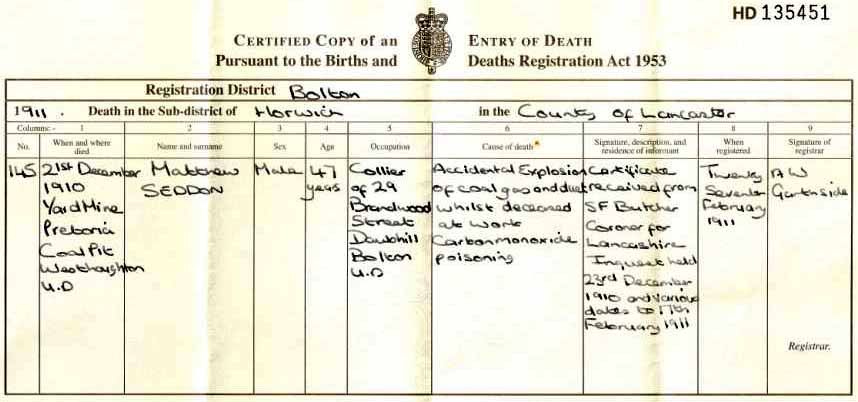 | |
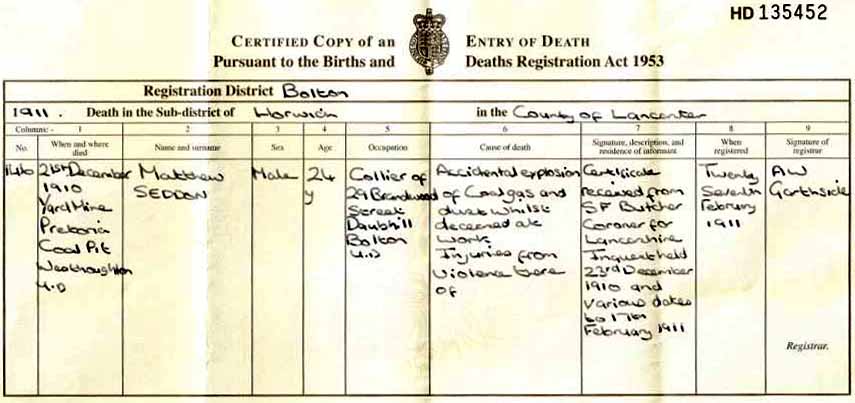 | |
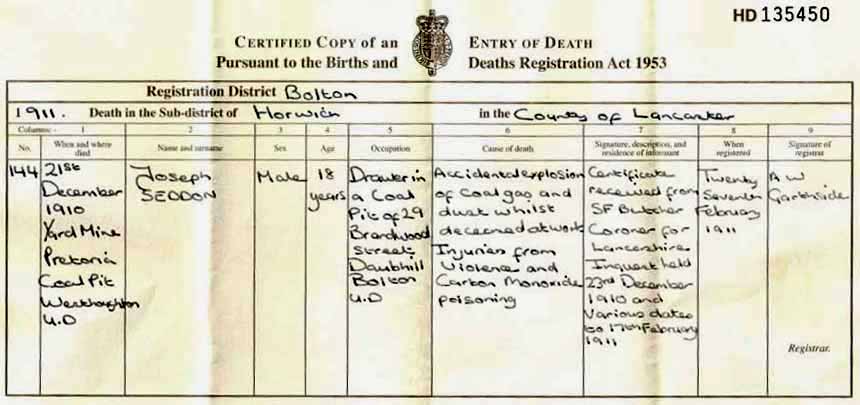 | |
Family associations
The names and ages of the family with whom a victim was living at the time of the disaster come from Trevor Griffiths' data files. For men in lodgings, their family in their 'home' town is given. If another family member died at Pretoria, (killed) appears after their name. If the name before marriage of a man's wife is known, it is inserted in brackets after her first name. We have tried to establish any close family relationships between victims from sources such as compensation records, censuses and memorial inscriptions. Our records are probably incomplete, especially for 'in-law' relationships.
HCF Dependants
In October 1911 the Hulton Colliery Explosion (1910) Relief Fund published a register of all those considered to be dependants of the victims: their names as given in the document are recorded here.
Financial information
The disaster had a huge economic impact on the lives of families and the pit communities. Trevor Griffiths has compiled a large private database of the various payments made to family and other dependants with respect to the dead men and boys, and is the source of the financial information presented here.
Insurance. Many of the victims were members of insurance/assurance institutions, sick and burial clubs, friendly societies or other savings organisations. The payments made on their deaths are recorded under the general heading of ‘Insurance’, giving the name of the institutions if known.
Compensation. Compensation was awarded from essentially three sources; miners’ permanent relief societies, the Hulton Colliery Explosion (1910) Relief Fund, and under the Workmen’s Compensation Act 1906.
All but 11 men were members of the Lancashire and Cheshire Miners’ Permanent Relief Society (LCM), the rest paying to the Wigan & District Permanent Relief Society (W&DPRS). The LCM paid a lump sum in respect of victims with no direct dependants, and an annuity for the widows and children of family men. In special cases a dependant parent or sibling could also be placed on the fund.
The Hulton Colliery Explosion [1910] Relief Fund (HCF) was established by the Mayor of Bolton to accept charitable donations and make regular payments to victim’s families, finally closing in 1975. Compensation payments were also made under the auspices of the Workmen’s Compensation Act 1906 (WCA). In most cases the WCA award comprised a lump sum down payment with the balance invested to provide a regular income, given here on a weekly basis.
Weekly income. The weekly income before the disaster is calculated on average earnings over the previous three years (where possible). The weekly income after the disaster is the sum of the compensation awards. Where more than one victim contributed to a family income, both the income before, and the compensation payments are combined, as indicated; this does not include income from other family members.
Notes
In the notes section we record which miners’ relief society the victim belonged to, any other club or society or religious affiliations of which we are aware, and any other items of interest. Most of this information comes from newspaper articles.
Variants
Variations in names, ages and addresses in the published information sources are recorded here. Also noted are any differences, duplications and obvious errors in the Redmayne report and Sgt. Brown lists of victims.
BEN: Bolton Evening News.
BJG: Bolton Journal & Guardian.
BR: Burial Register.
BRO: Bolton Register Office.
CO: the chemical symbol for carbon monoxide gas.
DR: Death registration.
G: Mines Department list of victims compiled by John Gerrard (1911).
GRO: General Register Office.
HCF: Hulton Colliery Explosion [1910] Relief Fund.
LCM, L&CMPRS: Lancashire and Cheshire Miners’ Permanent Relief Society.
MI: memorial inscription on a gravestone.
PB: Susan Peet’s 2002 transcript of Sgt. William Brown’s list of victims.
R: the report written by R.A.S. Redmayne (1911).
WCA: Workmen’s Compensation Act.
W&DPRS: Wigan & District Permanent Relief Society.
At least 23 men died while working at Hulton Colliery No.3&4 Bank Pits other than in the 1910 disaster. They are listed in Ian Winstanley’s National Database of Mining Deaths in Great Britain, now accessible online at The Coalmining History Resource Centre.
SHERSTONE William Henry, 32, Hooker on.
Fatal accident 15 Feb 1904. Hulton Colliery No.4 Bank Pit.
Slipped from curved cover of top of cage whilst cleaning out water ring
and fell 420 yards down shaft. A proper fenced cage provided for shaft
work should have been used.
CORNER Ernest Vincent, 17, Drawer.
Fatal accident 15 Jun 1904; died 21 Jun 1904. Hulton Colliery No.3 Bank Pit.
Buried in Westhoughton Cemetery.
He slipped on a landing plate and cut his right knee while bringing out
a full tub – wound not cleaned and blood poisoning ensued.
CLOUGH Charles Henry, 26, Collier.
Fatal accident 23 Dec 1904; died 27 Dec 1904. Hulton Colliery No.3 Bank Pit.
In work place at face a pot-hole dropped from the roof on to his back. Roof props set too far apart.
OLLERTON Arthur, 21, Collier.
Fatal accident 28 Jan 1905. Hulton Colliery (Pretoria) No.4 Bank Pit.
Buried in Tyldesley Cemetery Grave R.181 (as Hollerton).
Fall of roof in working place from a slippery parting. Roof props set too far apart.
ROCHE Patrick, 29, Dataller.
Fatal accident 25 Apr 1907. Hulton Colliery No.4 Bank Pit.
He tried to leave the cage after it had started to descend from the
surface when he realised it was going down to the Trencherbone Mine not
the Arley Mine; he was cut in two by the top hoop of the cage and the
edges of the landing plates.
FLETCHER George, 25, Dataller.
Fatal accident 24 Dec 1909. Hulton Colliery (Pretoria) No.3 Bank Pit.
Large stone 6ft x 4ft fell on him while increasing height of a roadway.
BLACKBURN James, 50, Collier.
Fatal accident 23 Aug 1911. Hulton Colliery No.3 Bank Pit, Plodder Mine.
Fall of roof from a slip in work place at face; not enough timbering set.
CRITCHLEY Robert, 20, Collier.
Fatal accident 5 May 1911. Hulton Colliery No.3 Bank Pit, Three Quarters Mine.
Fall of roof from between a slip and vertical joint while working coal off along line of slip; insufficiently propped.
JONES Roger, 43, Dataller.
Fatal accident 11 Jan 1912. Died 25 Feb 1912. Hulton Colliery No.3 Bank Pit, Yard Mine.
Hit by a stone fall from a pot hole while taking out a broken prop 7 yards back from the face.
MORRIS Frederick, 46, Collier.
Fatal accident 16 Jul 1912. Hulton Colliery No.4 Bank Pit, Arley Mine.
Buried in Westhoughton Cemetery.
Hit by a large piece of dirt that rode over a sprag while he was helping to make manholes.
HATTON John, 24, Banksman.
Fatal accident 16 Mar 1914. Hulton Colliery No.4 Bank Pit.
Engaged changing a bent fence bar or rail on the pit brow. He had
removed the bent rail and was replacing it with a straight rail when it
slipped and jerked him into the pit and he fell 435 yards. A cage
should have been in place to prevent him falling.
ASPINALL James, 51, Dataller.
Fatal accident 16 Mar 1915. Hulton Colliery No.4 Bank Pit.
Buried in Westhoughton Cemetery.
Killed by fall of stone.
HOLT James, 31, Screenhand.
Fatal accident 3 Aug 1915. Hulton Colliery Bank Pits 3&4.
Run over by wagon while crossing lines.
STONES Joseph, 40, Collier.
Fatal accident 1 Oct 1915. Hulton Colliery No.4 Bank Pit.
Cut and bruised leg. Blood poisoning set in.
BOARDMAN Edward, 23, Drawer.
Fatal accident 25 Jul 1916. Hulton Colliery No.4 Bank Pit.
Buried under a fall.
OGDEN George, 16, Drawer.
Fatal accident 03 Nov 1916. Hulton Colliery No.3 Bank Pit.
Buried in Westhoughton Cemetery.
Killed by fall of stone.
WRIGHT Harry, 39, Collier.
Fatal accident 24 Sep 1918, died 7 Oct 1918. Hulton Colliery No.3 Bank Pit.
Injury to back by fall.
PARTINGTON John William, 38, Collier.
Fatal accident 17 Sep 1920. Hulton Colliery No.3 Bank Pit.
Killed by fall of roof.
KINSELLA Francis, 33, Colliery carpenter, 263 Wigan Road, Atherton.
Fatal accident 29 Jun 1923, Hulton Colliery Pretoria Pit.
Died 5 Jul 1923 in Bolton Infirmary.
Buried 10 Jul 1923 in Atherton Cemetery, New Cemetery Grave 1458.
He was helping repair scaffolding at the pit bottom when it collapsed
and he fell 16ft breaking ribs and left leg which was later amputated.
Bolton Journal & Guardian 13 Jul 1923.
HOWCROFT Fred, 20, Drawer.
Fatal accident 22 May 1925. Hulton Colliery No.3 Bank Pit.
Killed by fall of roof.
ASHURST Joseph , 66, Dataller.
Fatal accident 16 Apr 1926; died 27 Sep 1926. Hulton Colliery No.4 Bank Pit.
Ruptured while working underground.
DEARNALEY Joseph, 26, Collier.
Fatal accident 8 May 1928. Hulton Colliery No.4 Bank Pit.
Killed by fall of roof at face.
TITHER Joseph, 19, Gang rider, 11 Mill Lane, Daisy Hill, Westhoughton.
Fatal accident 20 Feb 1929. Hulton Colliery, Pretoria Pit.
Killed by fall of roof in refuge hole after runaway tubs had dislodged a support bar.
Westhoughton & Horwich Journal 22 Feb 1929 & 1 Mar 1929.
ANDERSON Frank, 23, Cutterman, 33 Carr Bank Street, Atherton.
Fatal accident 16 Dec 1932. Hulton Colliery No.4 Bank Pit. Three Quarters Mine.
Buried 21 Dec 1932 in Atherton Cemetery No.3 Ground Grave 856.
Killed by fall of stone while setting a haulage anchor prop.
Horwich & Westhoughton Journal & Guardian, 28th Dec. 1932.
GALLAGHER Harold, 30, Collier.
Fatal accident 24 May1933. Hulton Colliery No.4 Bank Pit.
Stone fell from between slips and crushed him.
Our primary sources of information are listed below. There have been many articles and accounts of the disaster written in the past 96 years, often using anecdotal evidence and opinion. While they can be of considerable interest, they cannot be relied on as sources of factual information, and have not been used in compiling the victims’ data files presented here.
Published Material
Brown, William (1911) Identification list of the victims of the Pretoria Pit disaster 1910. [Transcribed and indexed from Police Sergeant Brown’s notes by Susan Peet, Westhoughton Library, 2002: 1-75].
Hatton, W.A. (1911) The Hulton Colliery explosion: an examination of the causes of death and the problems encountered in recovering the bodies by the doctor in charge. British Medical Journal 20 May 1911: 1164-1168.
Lancashire and Cheshire Miner’s Permanent Relief Society (1911). Hulton Colliery explosion, 21st December, 1910. List of names and addresses of cases with brief notes and orders.
Marsden-McGlynn, Cheryl (2000) Pretoria Confusion. A document lodged at Westhoughton Library; catalogue M0003952BT.
Mines Department (1911) Reports of HM Inspector of Mines for 1910 [Mr John Gerrard HM Inspector for the Manchester and Ireland District: list of fatal accidents 1910: 28-29].
Pope, Samuel (1911) Report on the explosion which occurred at the No.3 Bank Pit, Hulton Colliery on the 21st December, 1910. II. Report on the proceedings at the inquest. H.M.S.O. London: 51-69.
Redmayne, R.A.S. (1911) Report on the explosion which occurred at the No.3 Bank Pit, Hulton Colliery on the 21st December, 1910. I. Report of a formal investigation under section 45 of the Coal Mines Regulation Act, 1887, into the causes and circumstances of the explosion. H.M.S.O. London: 1-50.
Reel Vision Films (2006) Historical Disasters: Black Christmas (DVD narrated by Paul Loughran).
The Hulton Colliery Explosion (1910) Relief Fund. Declaration of Trusts for the administration of the above Fund. 30 Oct 1911.
Baptism and Burial Registers
Birth and baptism dates were extracted mostly from baptism registers, those of Westhoughton St Bartholomew, Wingates St John, Deane St Mary (up to 1886), Atherton St John and Hindley All Saints being the most important.
Other Public Sources.
Westhoughton Library (a branch of Bolton Libraries) has a large archive of material relating to Pretoria, and many reports on the disaster and its aftermath appeared in newspapers of the day, such as the Bolton Evening News. We have used these sources to provide ancillary detail about the victims.
The General Register Office (GRO) death registration indexes for January-March Quarter 1911 are freely available online. Bolton Register Office death registration indexes were supplied to us by Adrian Sugg, the Superintendent Registrar.
Census data from a number of online sources were invaluable for tracking down the birthplaces and confirming birth-years of the victims.
Private Database
Dr Trevor Griffiths, originally from Burnley and currently a Senior Lecturer in Economic and Social History in the School of History and Classics at Edinburgh University, has studied the economic and social consequences of the Pretoria Disaster on the pit community. His research into the impact of relief fund payments on the lives of the victims’ families over the succeeding 20 years, formed an important part of his book published by Oxford University (Clarendon) Press in 2001 “The Lancashire Working Classes c.1880-1930”.
Trevor readily provided information from his files on the victims and their dependents. Without his help we could not have presented accurate details of the family members co-resident with the victims at the time of the explosion. Nor would we have known the expected household incomes before and after the disaster, or details of compensation payments, especially for the Hulton Colliery Explosion [1910] Relief Fund awards, as those files have been closed for 100 years from the fund closure in 1975.
The Westhoughton Local History Group is a dedicated group of around 35 members, some of whom lost relatives in the disaster. Members have contributed photographs and documents, and have walked around graveyards and cemeteries helping to find stones with memorial inscriptions. One of the members, David A. Owen C.Eng. M.I.Min.E. M.I.O.S.H., is a retired coal miner and mines safety officer, and his advice on technical aspects of mining is much appreciated; he was also a church warden at St John’s Wingates, and provided access to the burial registers. Another group member Andrea Finney, has provided the project with photographs and family history of her five relatives who were lost in the disaster.
Paul Dixon, the coordinator of the Lancashire OnLine Parish Project made it possible for us to present this information on the LAN-OPC Westhoughton Parish site.
Thanks are due to the Rev. Ian Mainey, Rector of Deane Team Ministry, who gave us access to the Deane St Mary burial register.
We are most grateful to the late Susan Peet and the Westhoughton Library Staff, who gave us full access to archived material, and helped us in many ways.
Bill Smith, a teacher at Westhoughton, opened his data files on Pretoria victims, prepared for teaching purposes using a Lotteries Grant, and also supplied details of some Heaton Cemetery Grave Deeds.
Adrian Sugg, the Superintendent Registrar of Bolton Register Office is thanked for checking the registry records for us, to confirm the number of registered dead from Pretoria, both known and unknown, and also to answer many related queries.
The following people freely gave their time to help, especially in finding burial information in newspapers and registers, and taking photographs of gravestones for us in areas away from Westhoughton and Bolton.
Tony Bassett & Kay Chadwick of Wigan Leisure and Cultural Trust (Wigan MBC);
Emma Challinor of Wirral Archives Service;
Elaine Hansen and Sue Hook for mid-Cheshire burials;
Pauline Hodkinson of Darwen;
Jim Hunt and family for Atherton Cemetery photographs;
Jacqui Kilcoyne who helped with library research and gravestone searches;
Valerie Lirakis administrator of the Rootsweb Bolton Mailing List;
Helen Mayoh of Walkden for burials at Walkden St Paul;
Linda Pye for Flaybrick Cemetery photographs;
Sandwell Archives Service, Staffordshire;
Gordon Seddon who helped with research at Leigh Library;
Bob Thornley for burials at Halliwell St Peter;
Lynne Noone of Preston Cemeteries;
Christine Watts of Wigan Heritage Service;
Bob Winder of Bolton;
Ian Winstanley of the National Database of Mining Deaths in Great Britain;
Graham Wood of Over Hulton;
Heaton Cemetery gravediggers Mick and Dave;
Tongue cemetery gravediggers Nick and Ste;
Steve Wood for information about William Turton and his family;
Brendan and Jan O'Farrell for information about the Seddon family;
We have taken a lot of trouble to ensure the data on the victims are accurate, but if anyone has information to the contrary, or can add to what we have presented, please contact Peter Wood. We would like to build up a photo gallery of as many of the victims as possible. If anyone has such a photo and would like to have it displayed on this site, please contact Pam Clarke.
Peter Wood
May 2009
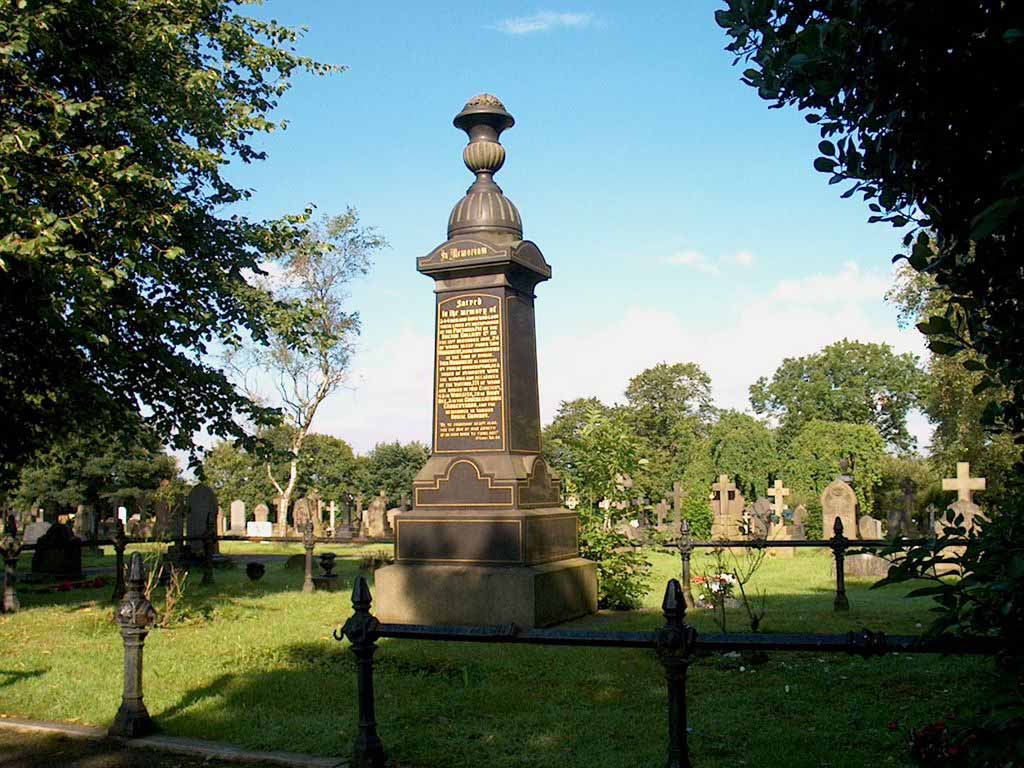 | |
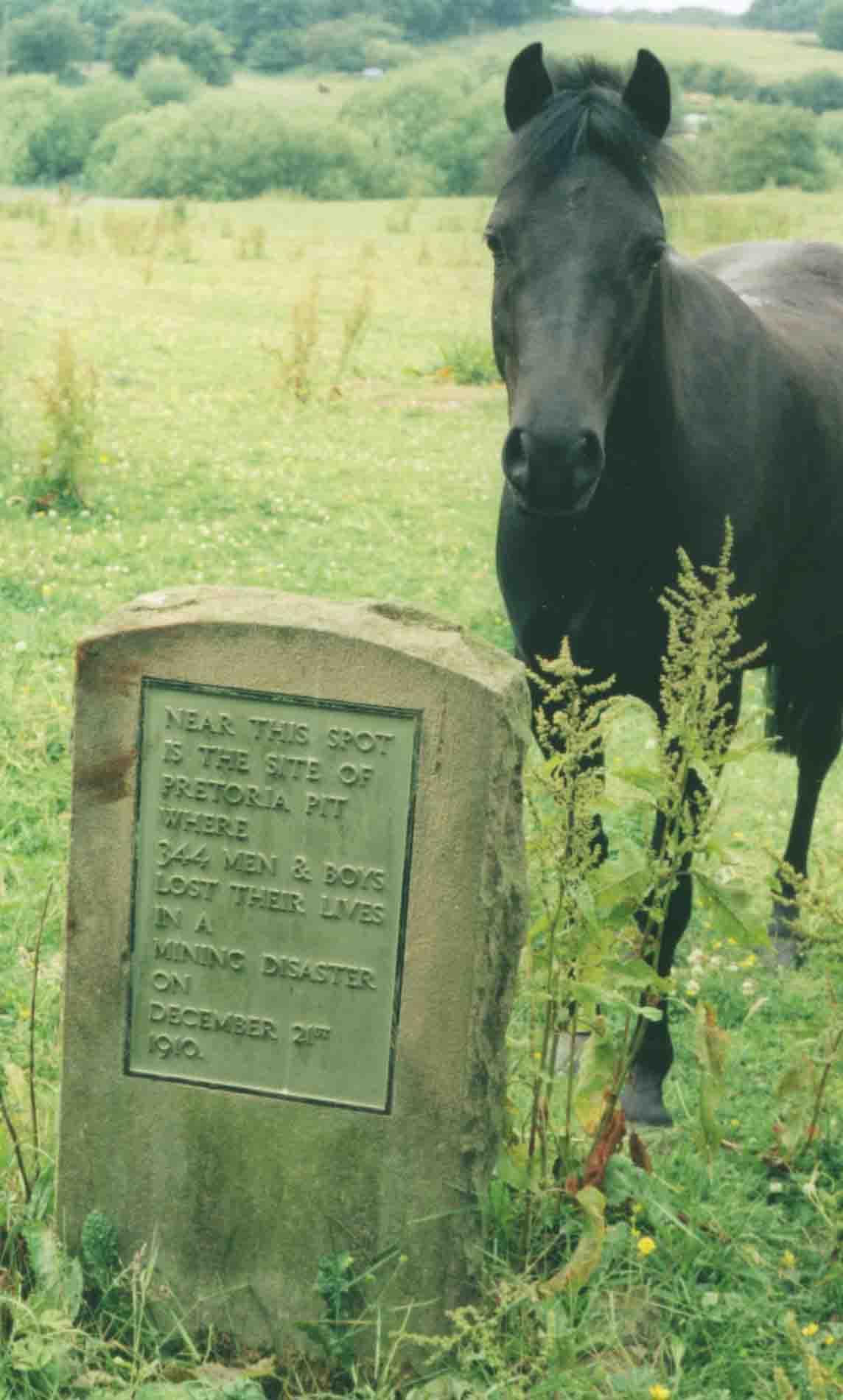 | |
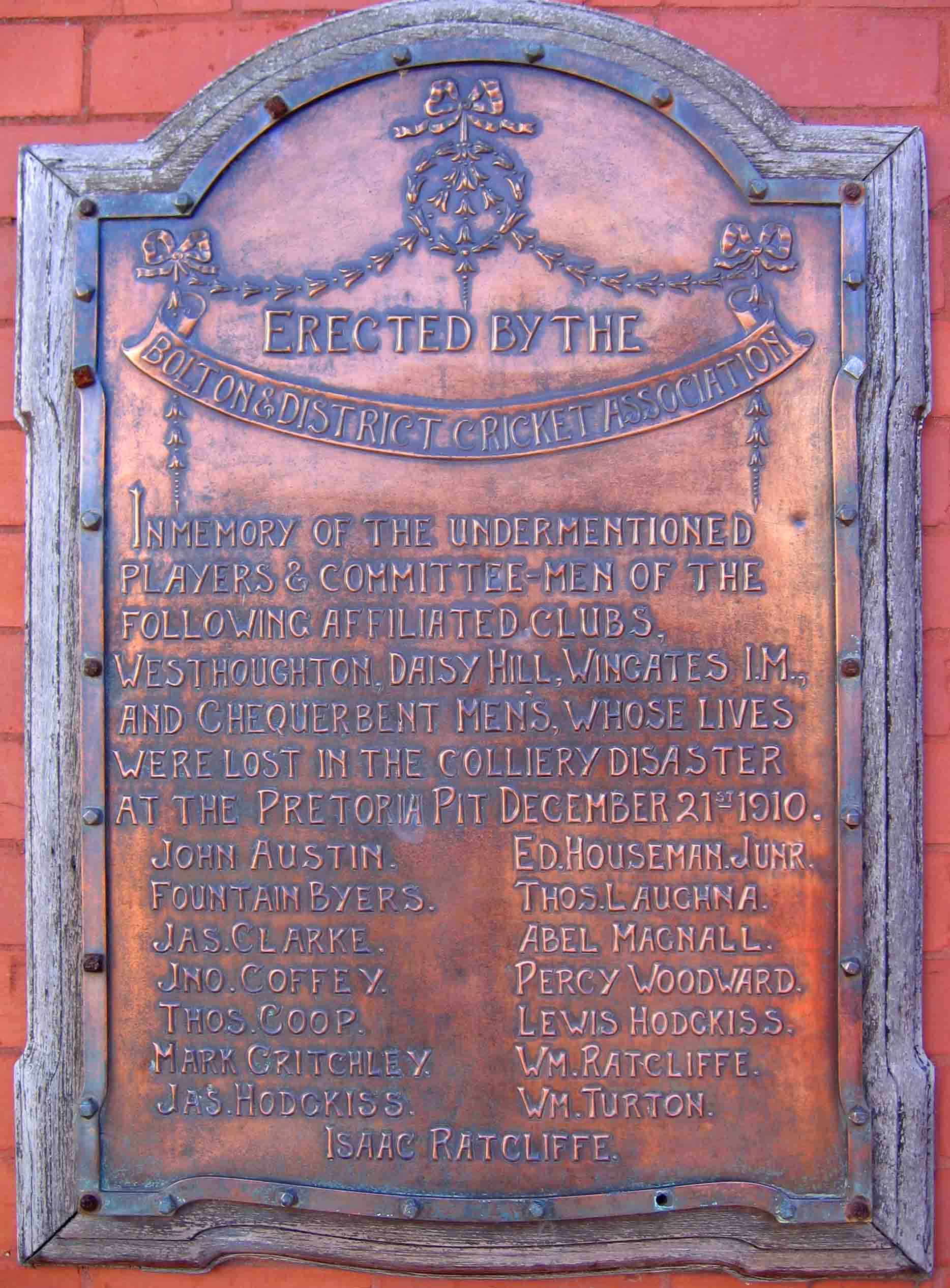 | |
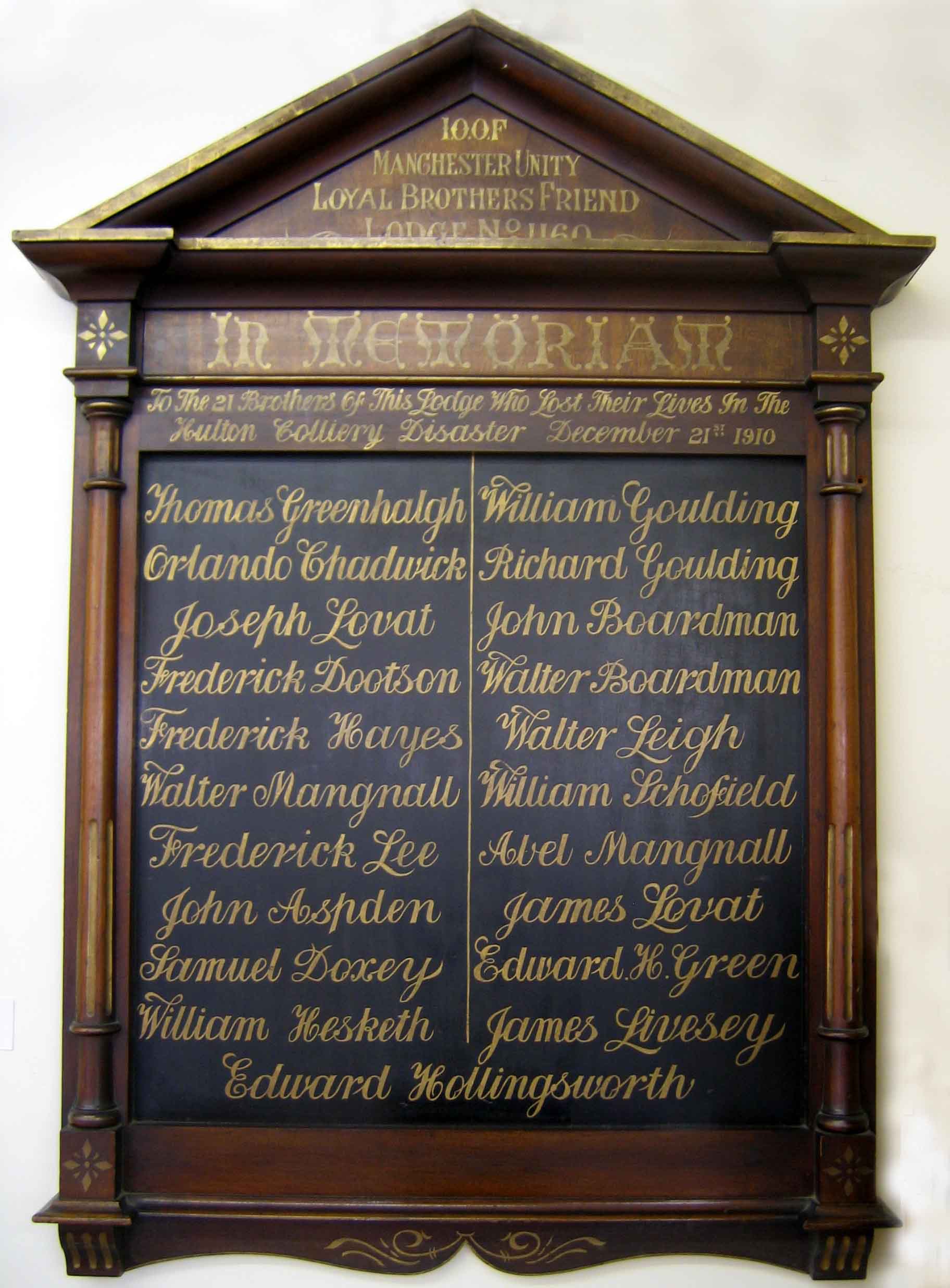 | |
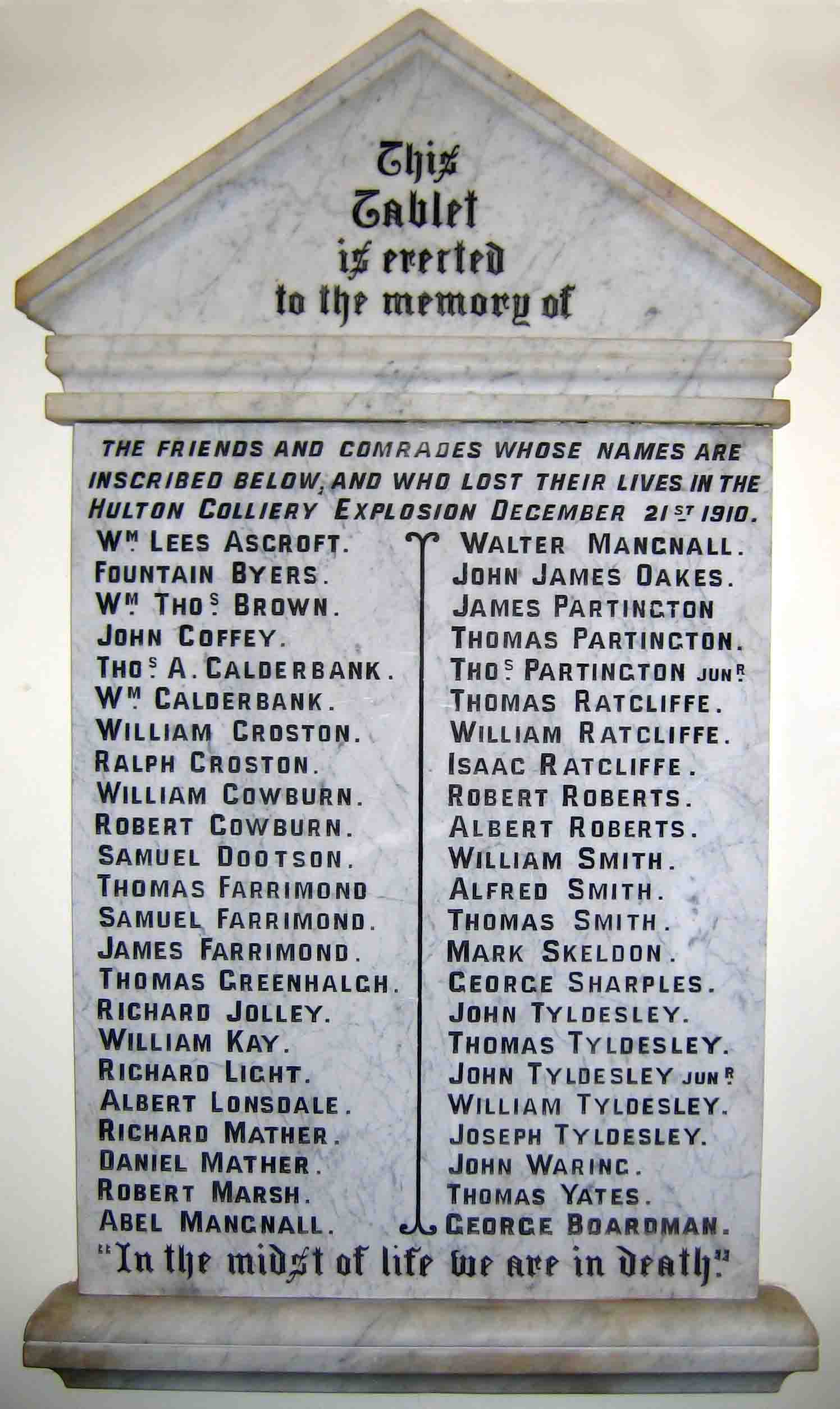 | |
| Westhoughton Home & Contents | ©Lancashire OnLine Parish Clerks | Lancashire Home |